There are hundreds of milk cap mushrooms in North America, and some are excellent edible species. It can be challenging to differentiate between some milky cap mushrooms, but it’s usually quite easy to determine if you’ve found a milky cap – slice the gills and see if they emit a milky substance. Milky caps are super common across the continent, so there’s a good chance that you’ll encounter them no matter where you live. Learn to identify the good edible ones, and you’ll have some good foraging finds!
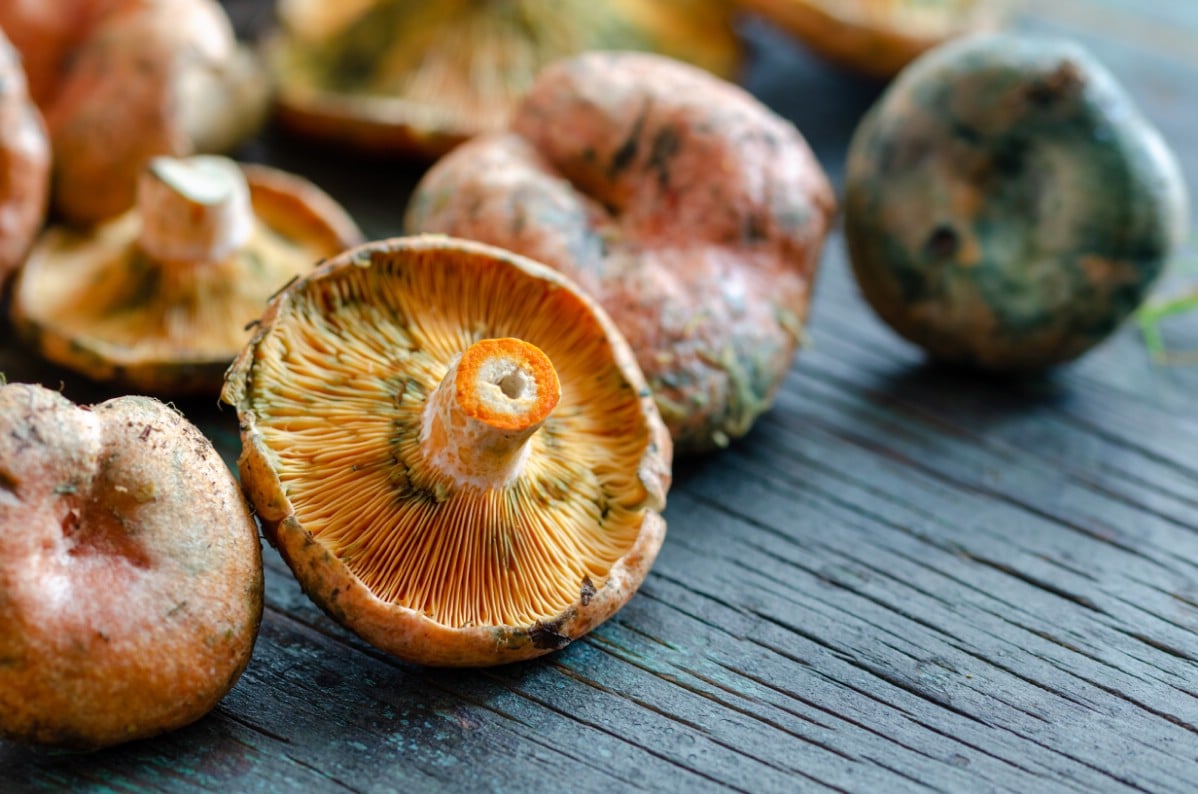
Jump to:
All About Milk Cap Mushrooms
There are over 600 milky cap fungi across the globe. Milk cap mushrooms belong to the genus Lactarius and Lactifluus, which are in the Russula family. They have round caps ranging from 2 to 6 inches in diameter. Their coloring varies widely, with many being whitish or rather bland looking and others being super bright and colorful.
Lactarius deliciosus is strikingly bright with carrot-orange caps and darker concentric circles. Lactarius indigo is a brilliantly deep indigo-blue hue that fades to a silvery blue with age. The majority of milk cap mushrooms, however, are more bland looking than these colorful superstars. They are often buff or brown or just overall dull looking and easily overlooked.
The most defining characteristic of milk cap mushrooms is their ability to produce a milky or latex-like substance when cut or damaged. No other gilled mushrooms do this. This “milk” can vary in color, including white, orange, red, yellow, purple, and even blue. The latex often has a mild taste but can be slightly acrid in some species. The color of the latex may change over time, and it can also cause staining of the mushroom’s flesh.

The milky latex is believed to be an evolutionary method the mushroom has developed to deter insects from eating them. When the bug or snail bites into the mushroom, their mouth is filled with a thick, often bitter, liquid that is less than pleasant for the poor creature seeking a snack.
Several milk cap mushrooms also have super exotic and distinct smells. One smells like rotting fish, another smells like coconuts, another like maple syrup, and another like curry. This is a very interesting group of mushrooms!
There are no deadly milky cap mushrooms. Some are toxic in that they’ll cause gastrointestinal distress if eaten, but they won’t kill you.
The genus Lactarius, described by Christian Hendrik Persoon in 1797, originally included all milk-cap mushrooms. The name “Lactarius” comes from the Latin “lac,” meaning milk. Initially, L. piperatus was the type species, but in 2011, L. torminosus became the new type after Lactifluus was separated as a distinct genus.
Molecular phylogenetics revealed that milk-caps were actually a paraphyletic group. This discovery led to the splitting of Lactifluus from Lactarius and the creation of the new genus Multifurca. DNA analysis has also uncovered many cryptic species within the genus – there are probably a lot more changes coming in the near future, including descriptions of new species.
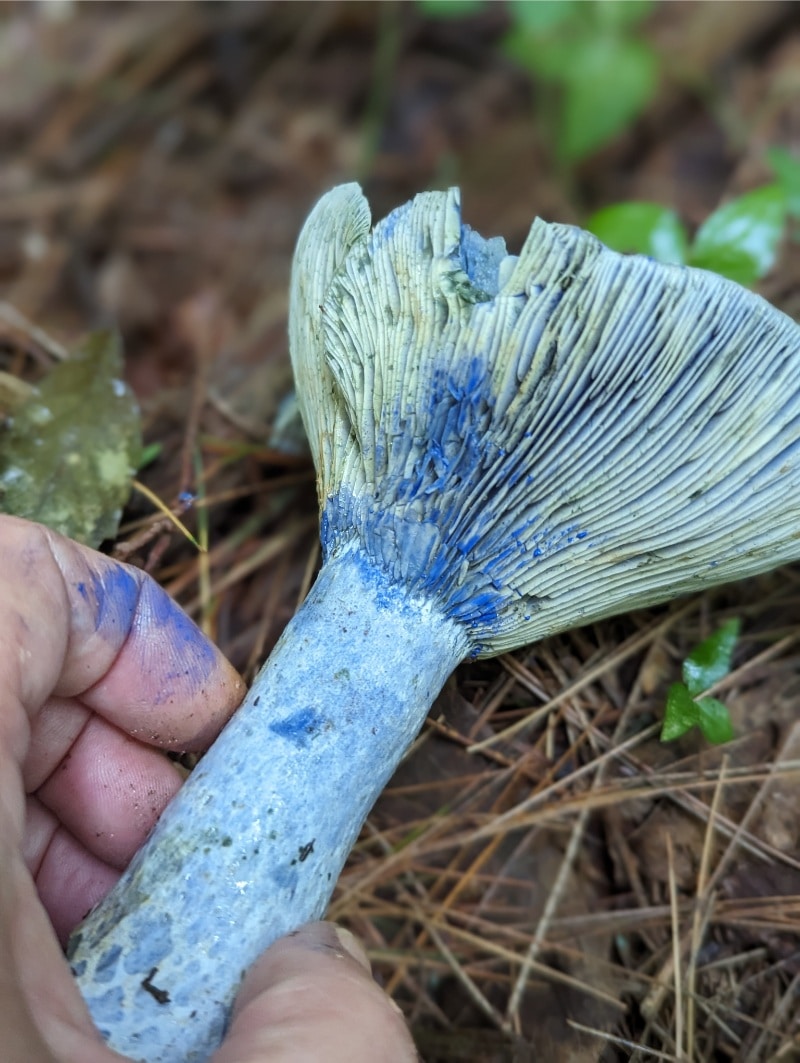
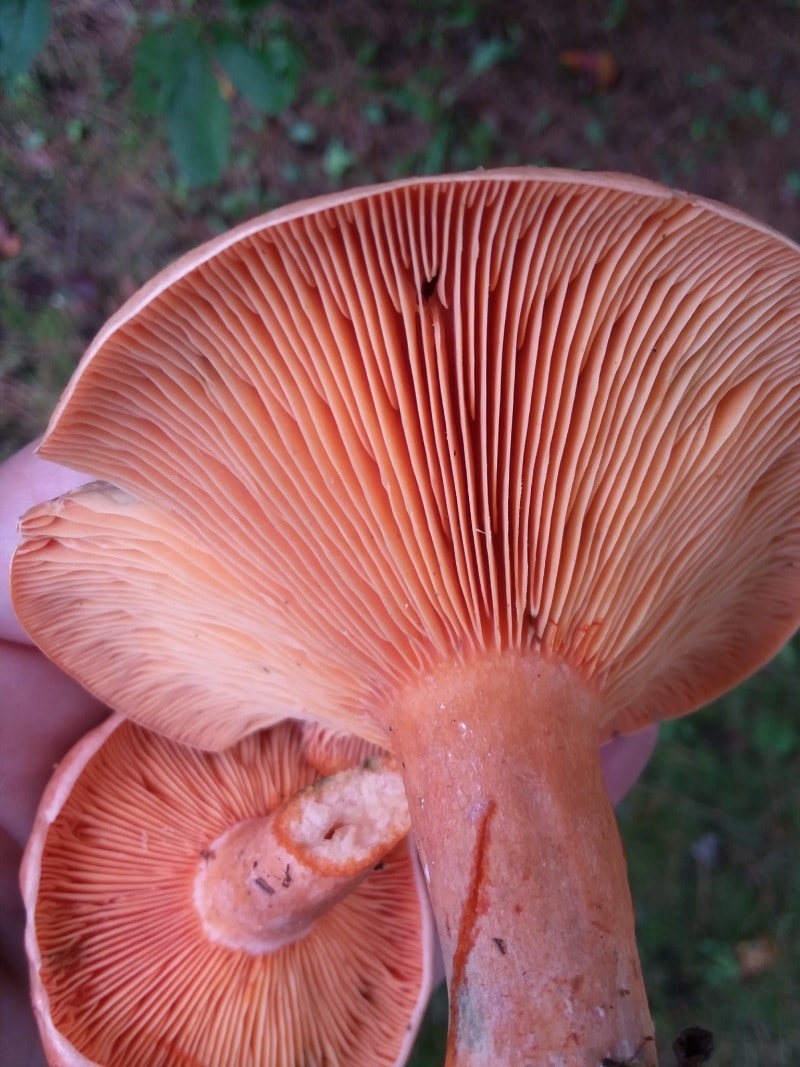
Milk Cap Mushroom Identification
Season
Most milk cap species are summer to fall mushrooms, but this varies by species and also on region. In the Pacific Northwest, candy caps are late fall to winter mushrooms.
Habitat and Distribution
Milk cap mushrooms are mycorrhizal fungi and form symbiotic relationships with tree roots. They grow on the ground in deciduous and coniferous forests. They never grow from trees or on wood. Milky caps are widely distributed across North America.
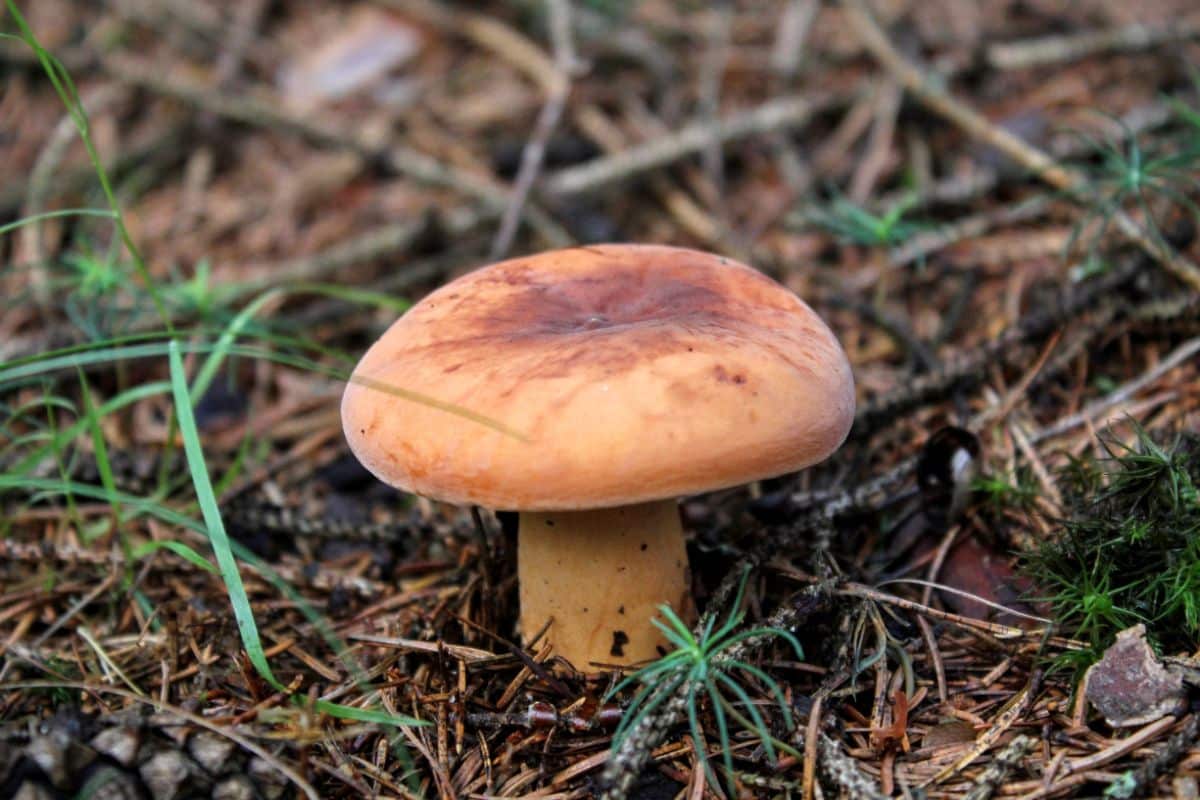
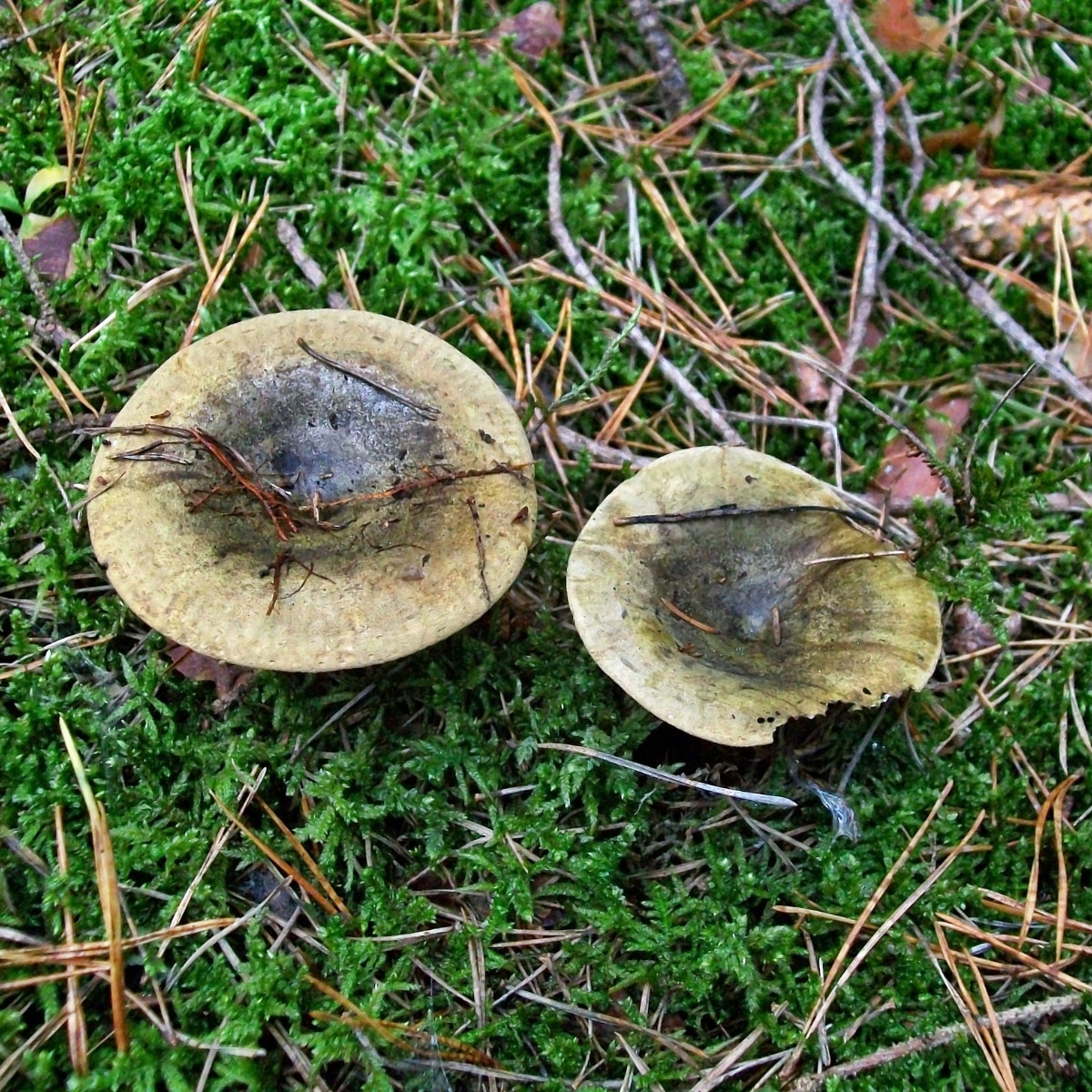
Identification
Milk cap mushrooms belong to two main genera: Lactarius and Lactifluus. They share many to almost all their characteristics, such as brittle flesh, overall appearance, and the production of a milk-like latex when bruised.
Lactarius species often have slightly slimy or wet caps when moist. Of course, this feature is hard to point out in dry weather. They also often have distinctive color zones on their caps, and some have cap edges with hanging fibers, a bit like a beard. Lactarius species are known for the “potholes” on their stems (scrobiculate). Not all of them have this, though.
Lactifluus species often have dry to slightly fuzzy caps, but again, this is not true for all species.
Overall, figuring out whether you’ve got a Lactarius or Lactifluus species is a challenge. Many of these features require a microscope or a very keen eye.
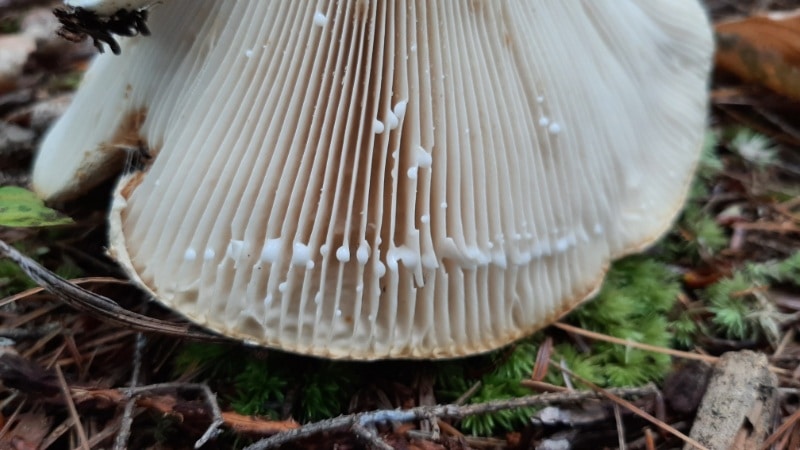
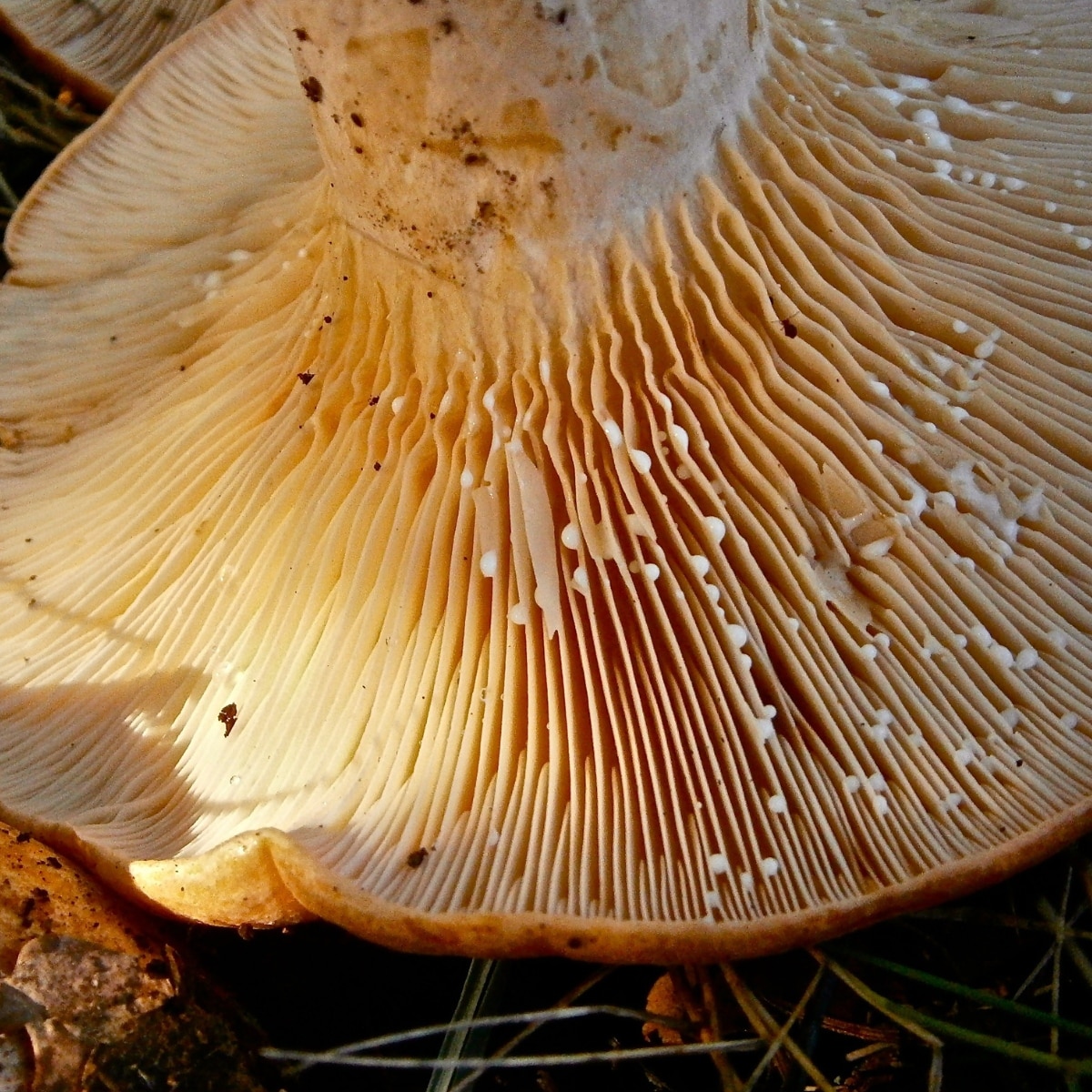
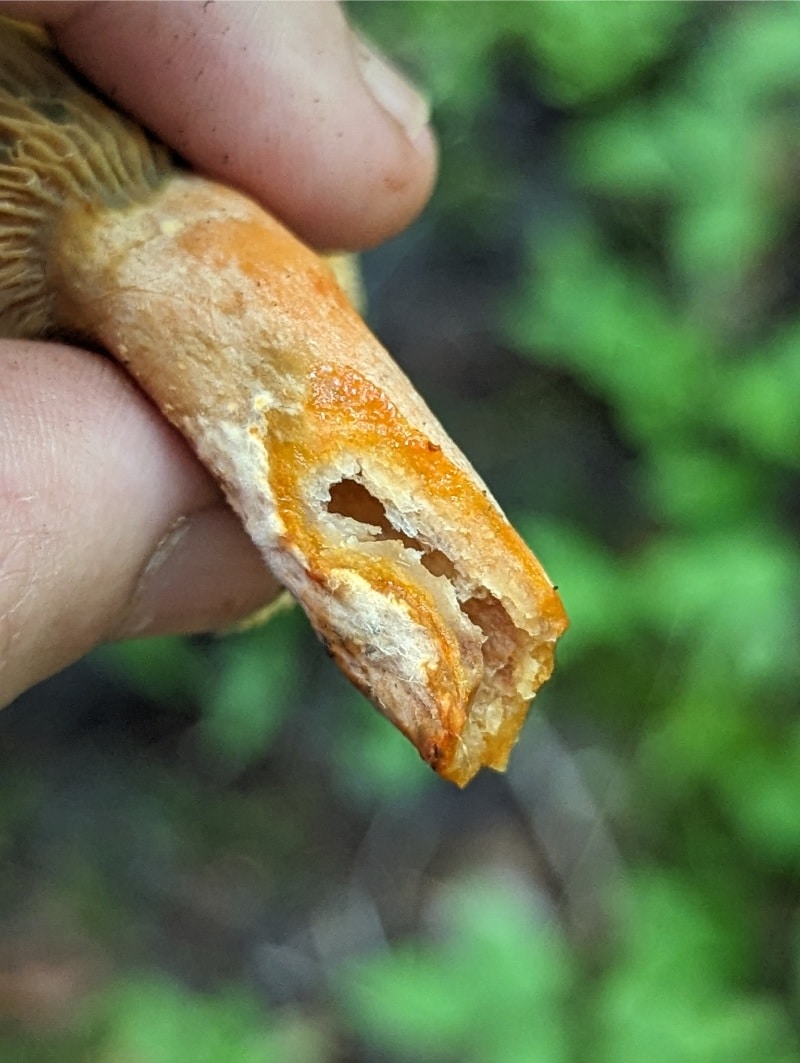
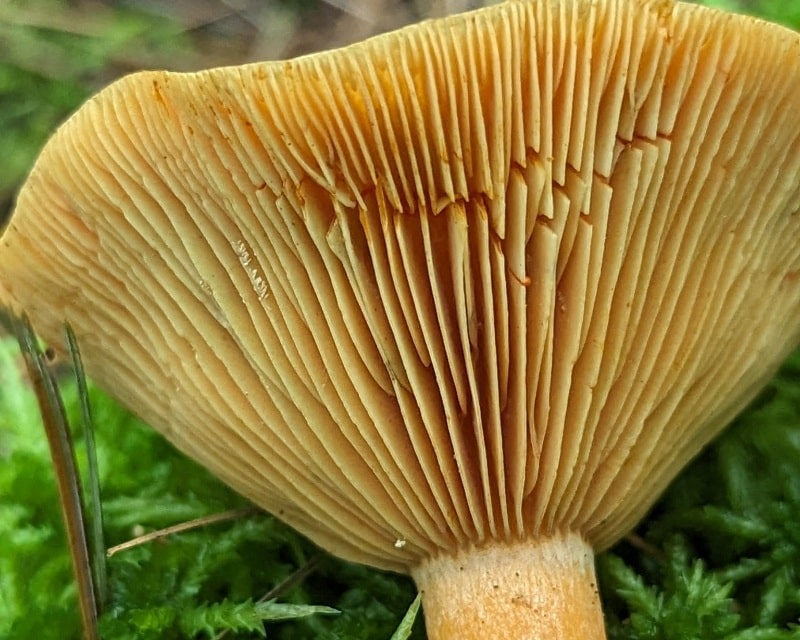
The Milk
The primary identification feature of milk cap mushrooms, regardless of their genus, is their ability to produce a milky or latex-like substance when cut or damaged. This “milk” can vary in color, ranging from white to orange, yellow, or even blue. The color and any changes in the latex after exposure to air are crucial for identification. Some species bleed profusely when cut (and might stain your hands!), and others barely emit any milk at all.
It’s essential to observe the milk carefully, as some species produce scanty milk, especially in older specimens or during dry weather. Patience is key, as it may take up to an hour or more to see the staining.
So, anytime you’re identifying a milk cap mushroom, you must:
- Cut the gills (this is the best place to check for milky latex, although some “bleed” more when the stem or cap is cut.)
- Note the color of the initial latex
- Check if the latex changes color over time (up to 60 minutes)
- Notice the staining color on the gills
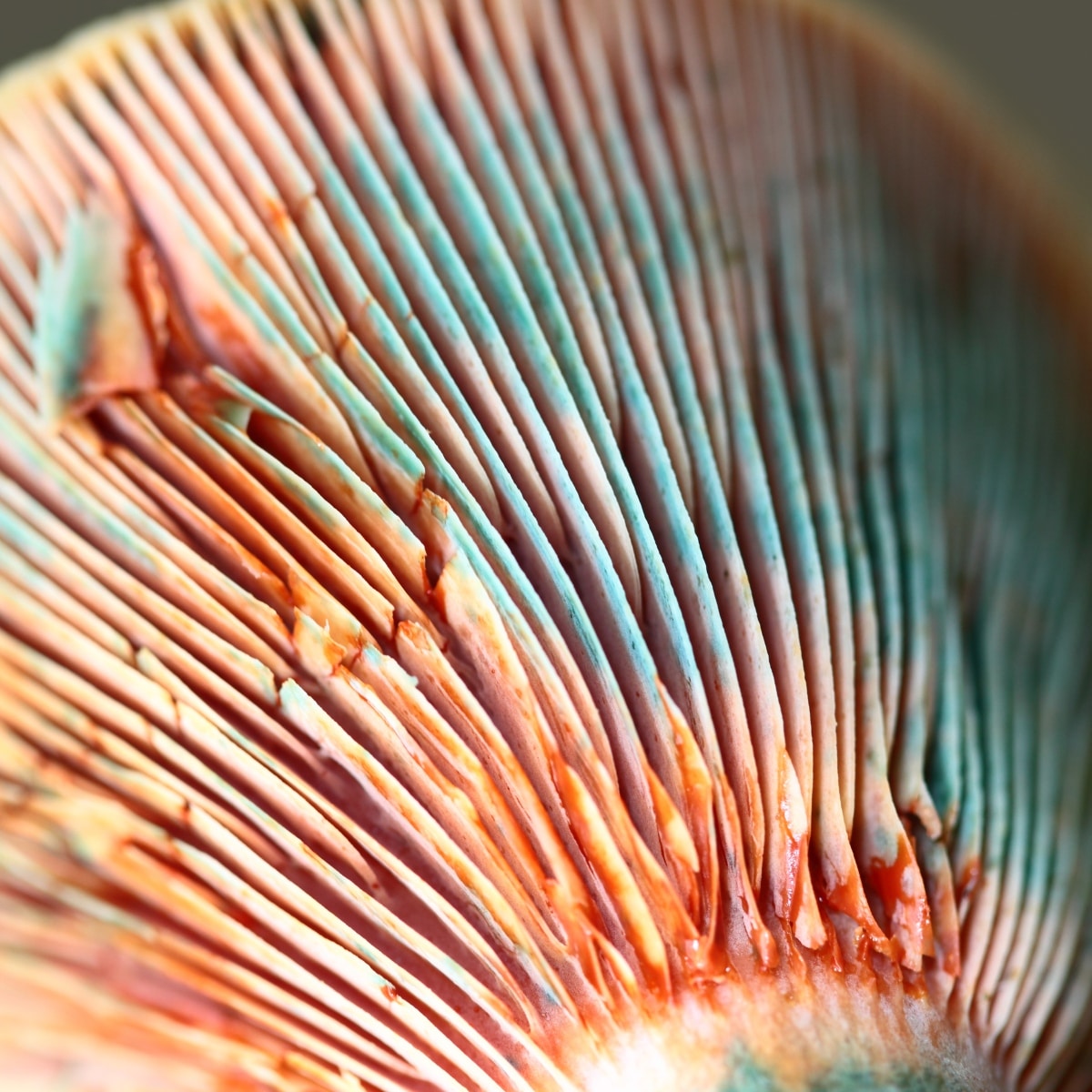
Cap and Stem Characteristics
The caps of milk cap mushrooms start out rounded and umbrella-shaped. With age, the caps open up and flatten. When they’re well past maturity, the gills may even start to flip upwards to create a vase shape.
Many species have concentric circles on the cap. The cap might be flat or slightly depressed in the center. The cap colors vary widely, from dull browns and grays to vibrant oranges and yellows. More often than not, they’re a buff to brownish to dull orangish color and look pretty unremarkable on the forest floor. The texture can be dry, slimy, or sticky, often cracking with age.
The stem is usually thick and sturdy. It can be smooth, ridged, or scaly and may have a rough surface. The stem’s height varies by species but is typically short and stocky.
Milky cap mushroom flesh is dense and brittle. The stem and caps snap easily when broken, just like with Russula species.
Milk Cap Mushroom Identifying Features:
- Milk exudes from gills when cut or bruised
- Grows from the ground
- Brittle flesh
- No ring around the stem
- May have zonal coloring on the cap (not always)
- May have pock marks on the stem (not always)
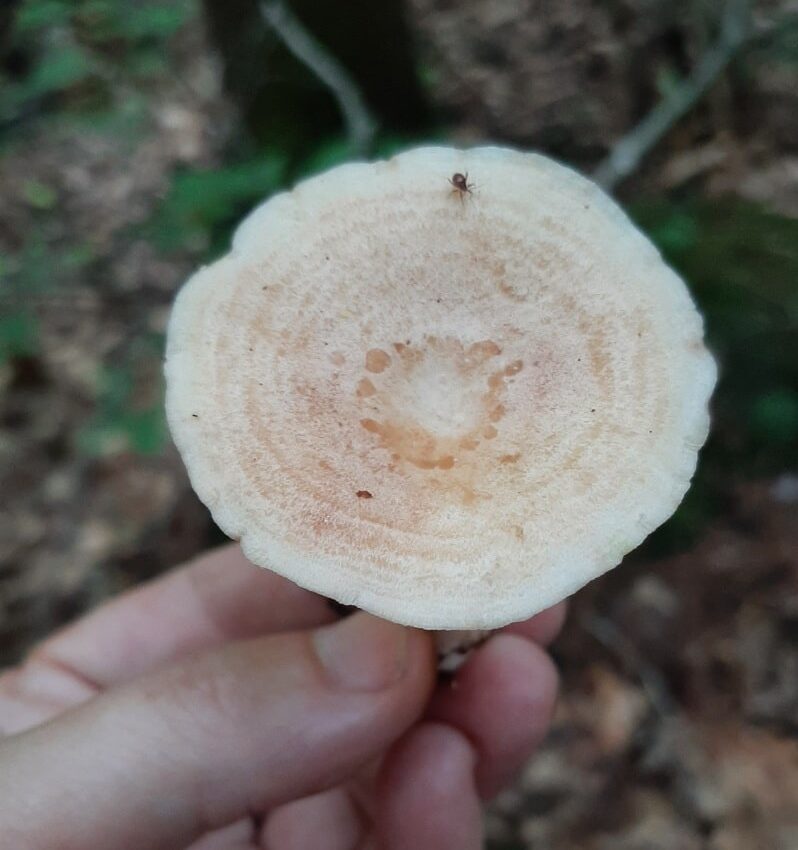
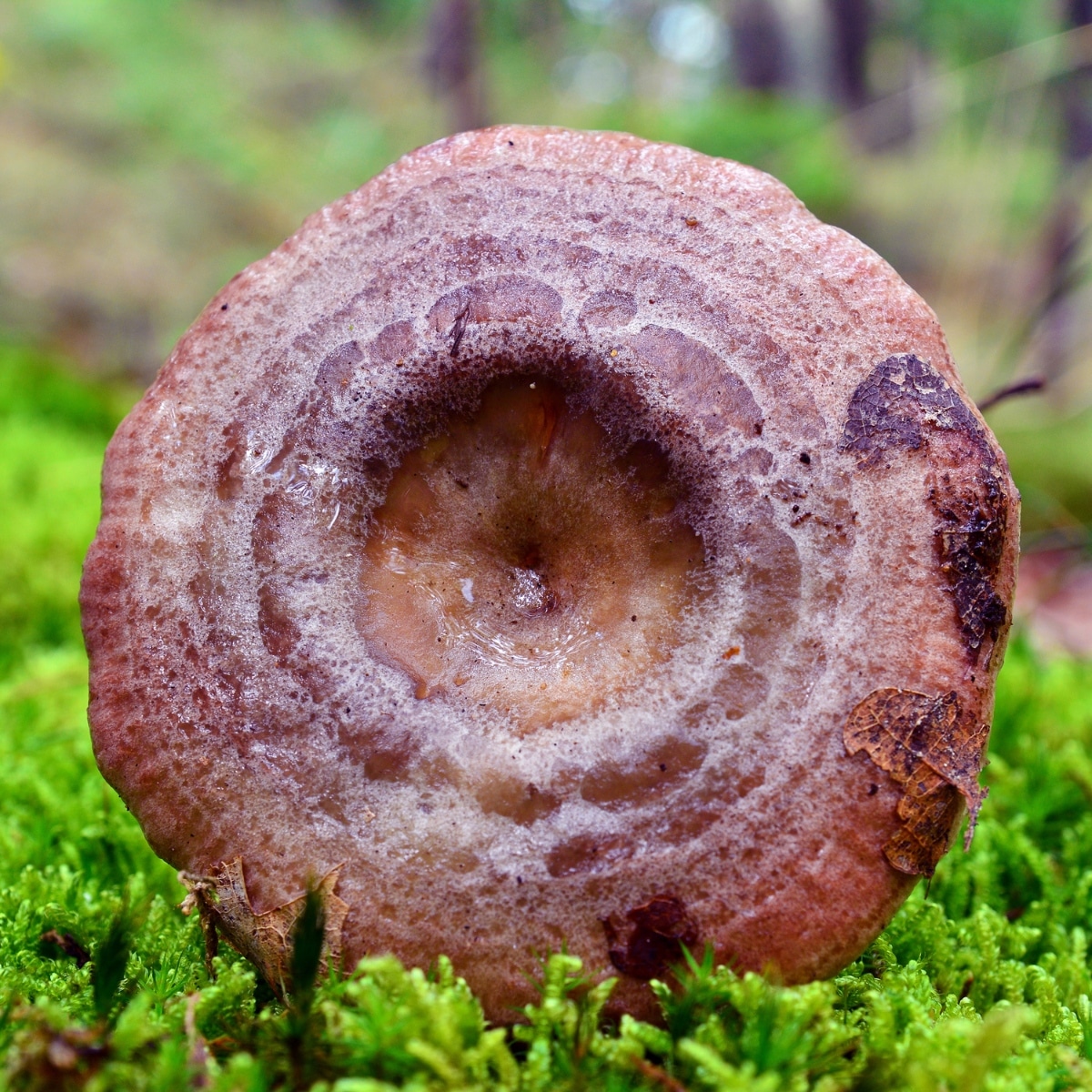
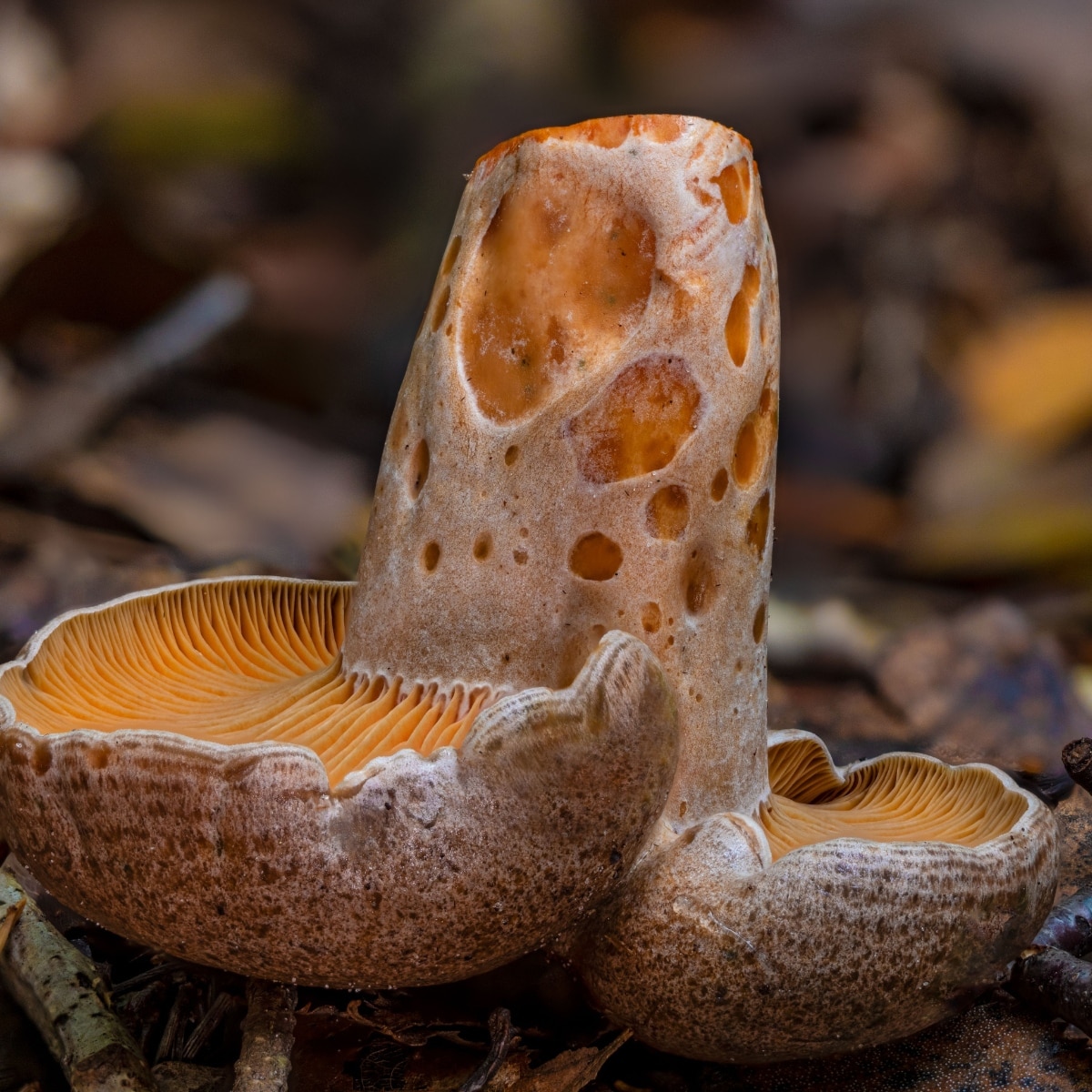
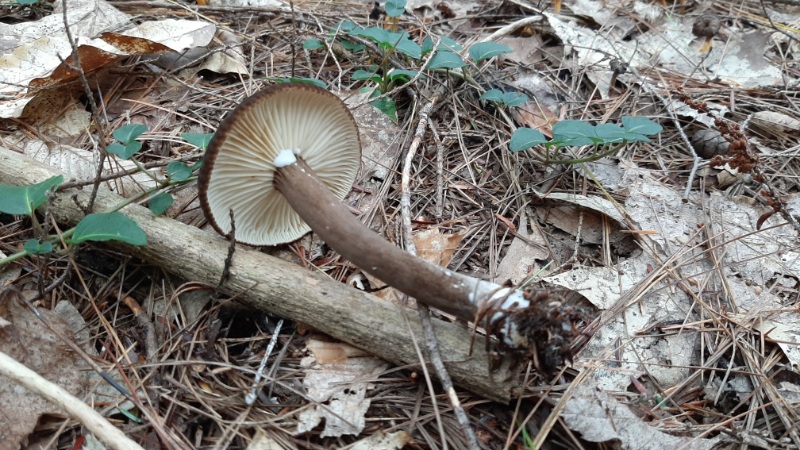
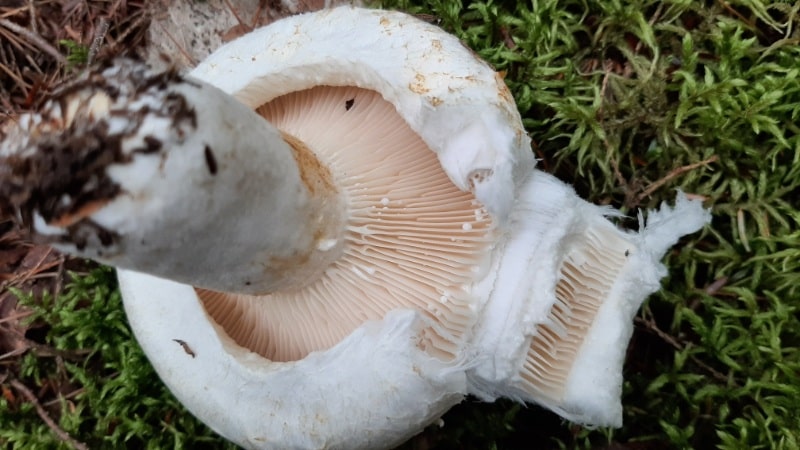
Milky Cap Mushrooms Lookalikes
Russula Species
Russula mushrooms are closely related to the milky caps and look almost identical. They have rounded caps, gills, and brittle flesh and grow on the ground. Russulas are also extremely common everywhere and often grow in huge swaths. The best and sometimes only way to tell them apart is to cut the gills and check for bleeding. Russula mushrooms never bleed milky latex when cut.
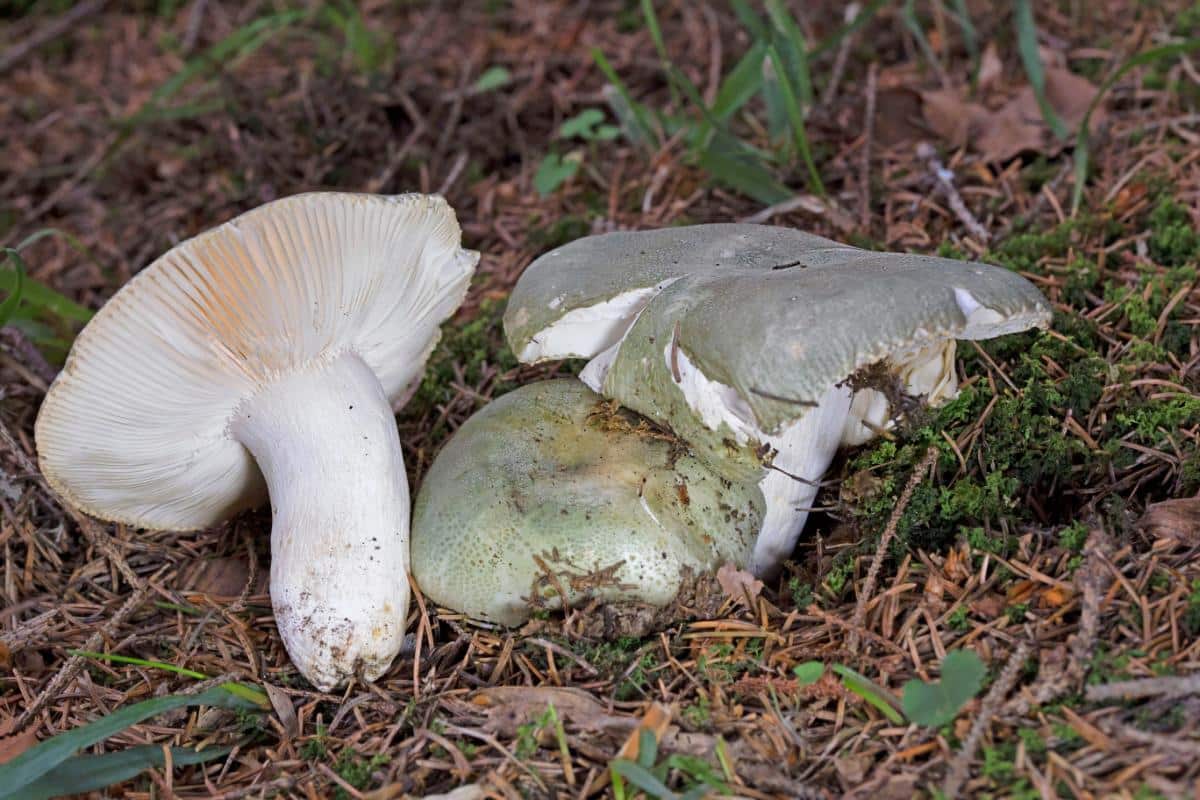
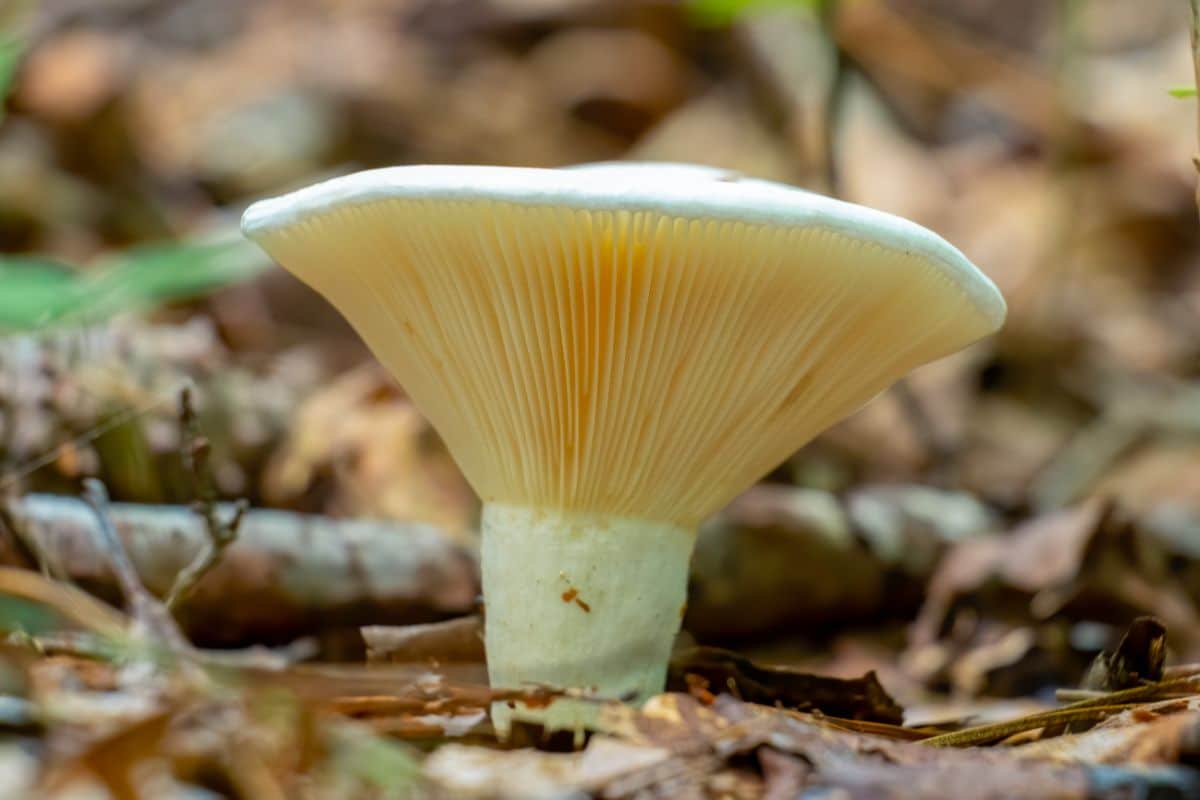
Agaricus Species
The common and widespread Agaricus species (meadow mushroom, horse mushroom, Prince Agaricus, wood mushroom) also have a rounded cap, gills, and brittle flesh. Common button mushrooms are part of the Agaricus species and are a good representation of what many of them look like. Agaricus mushrooms, though, have white to pinkish gills that turn brown with age and usually a ring around the upper stem. They also do not bleed any milky latex when cut.
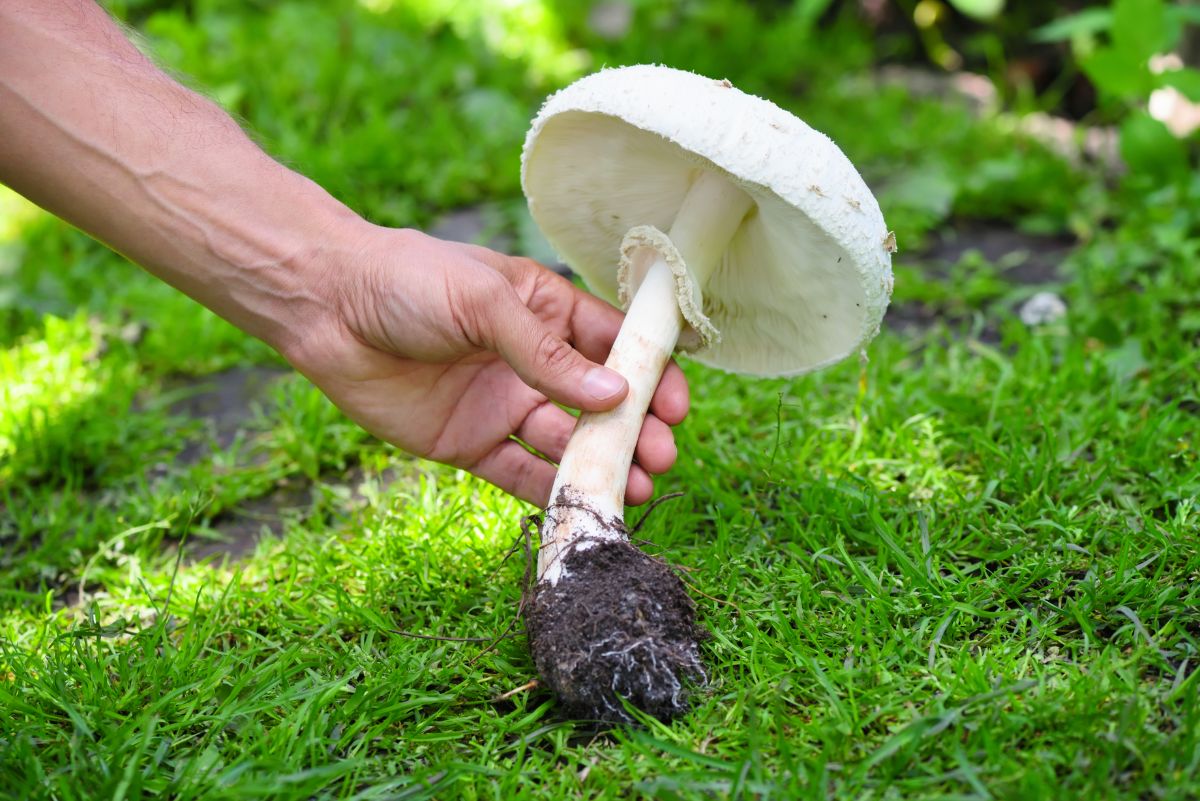
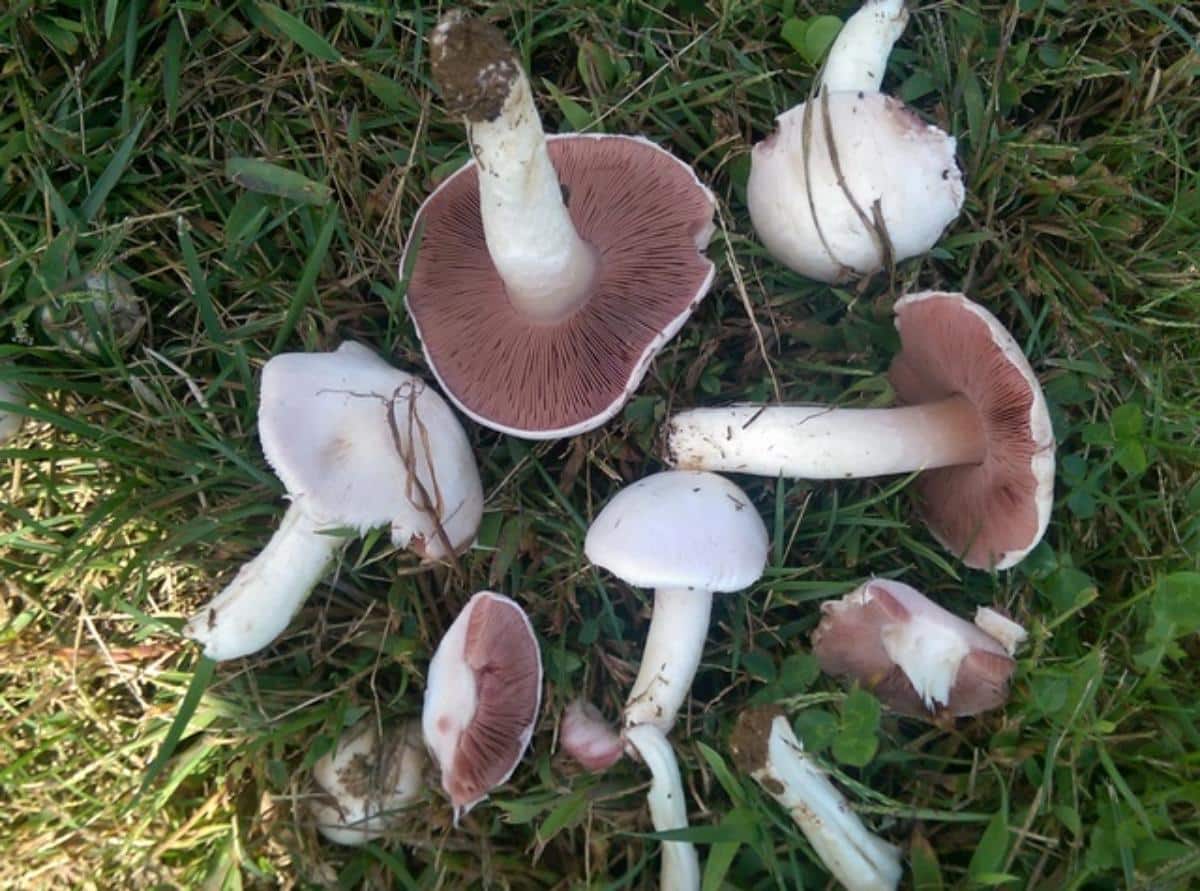
Edible Milk Cap Mushroom Species
There are some really neat edible milk cap species. One smells and tastes like maple syrup and another will turn your egg dish a bright green, just like in the Dr. Seuss story.
Since no milk cap mushrooms are deadly, it’s okay to, and often essential, to taste the acridity of the latex and flesh. Any with bitter milk or flesh aren’t going to be great eating. This is an excellent way to measure the basic edibility of any milk cap mushroom species. It’s called a nibble and spit test – take a tiny bit of flesh in your mouth, chew it for a few seconds, then spit it out. You’ll get the flavor pretty quickly.
Saffron Milk Cap (Lactarius deliciosus group – there are four species described in N. America currently)
The Saffron Milk Cap, or Red Pine Mushroom, is a distinctive and prized edible mushroom species. It typically measures 2 to 8 inches in diameter. Its cap starts out rounded but becomes flatter or slightly depressed with age. The cap’s color ranges from orange to pale red and has concentric zones of darker and lighter shades. Orange latex oozes from the flesh when cut or bruised and slowly turns green upon exposure to air. The stem is usually 1 to 3 inches tall and has a similar color to the cap. The saffron milky cap grows in pine forests in a mycorrhizal relationship with various pine species.
This mushroom is enjoyed for its mild, slightly fruity flavor and firm texture. They’re versatile in the kitchen and can be prepared in various ways, including sautéing, grilling, or using in stews and sauces.
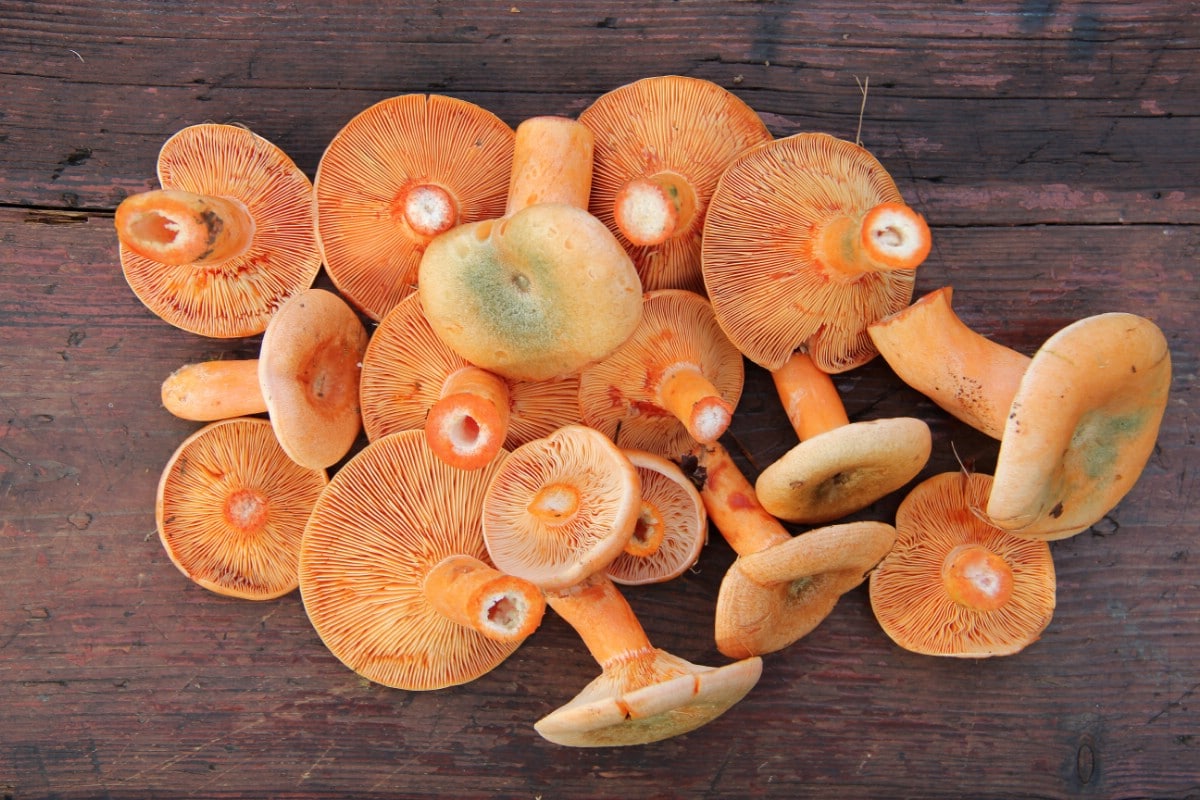
Indigo Milky Cap (Lactarius indigo)
This mushroom is noticeable becaue of its vibrant blue color, though the outer coloring may fade with age. However, when you cut into the flesh or gills of an indigo milky cap, you’re in for a treat! The mushroom releases a deep, bright blue latex or “milk” that is straight out of the Smurfs. The indigo milk cap measures 2 to 6 inches in diameter and is rounded with a slightly rolled under edge. Its stem is usually 1 to 3 inches tall and the same color as the cap. The gills underneath the cap are also blue.
It has a mild, slightly peppery flavor and a firm, crisp texture that holds up well in various cooking methods. The mushroom can be sautéed, grilled, or used in stir-fries, and it pairs particularly well with garlic and herbs. Sadly, the bright blue color doesn’t stay through cooking. It fades to a muted grayish-green when cooked. This color change is fun when combined with eggs, though – you’ll have green eggs for your ham, all natural!
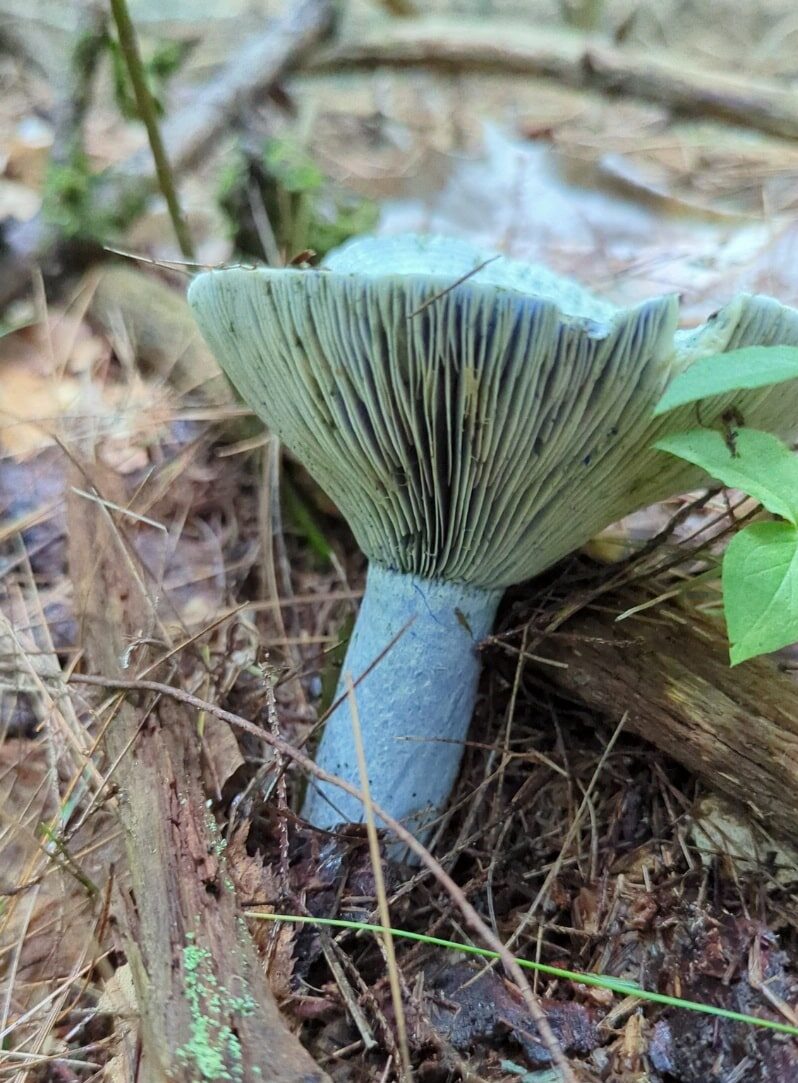
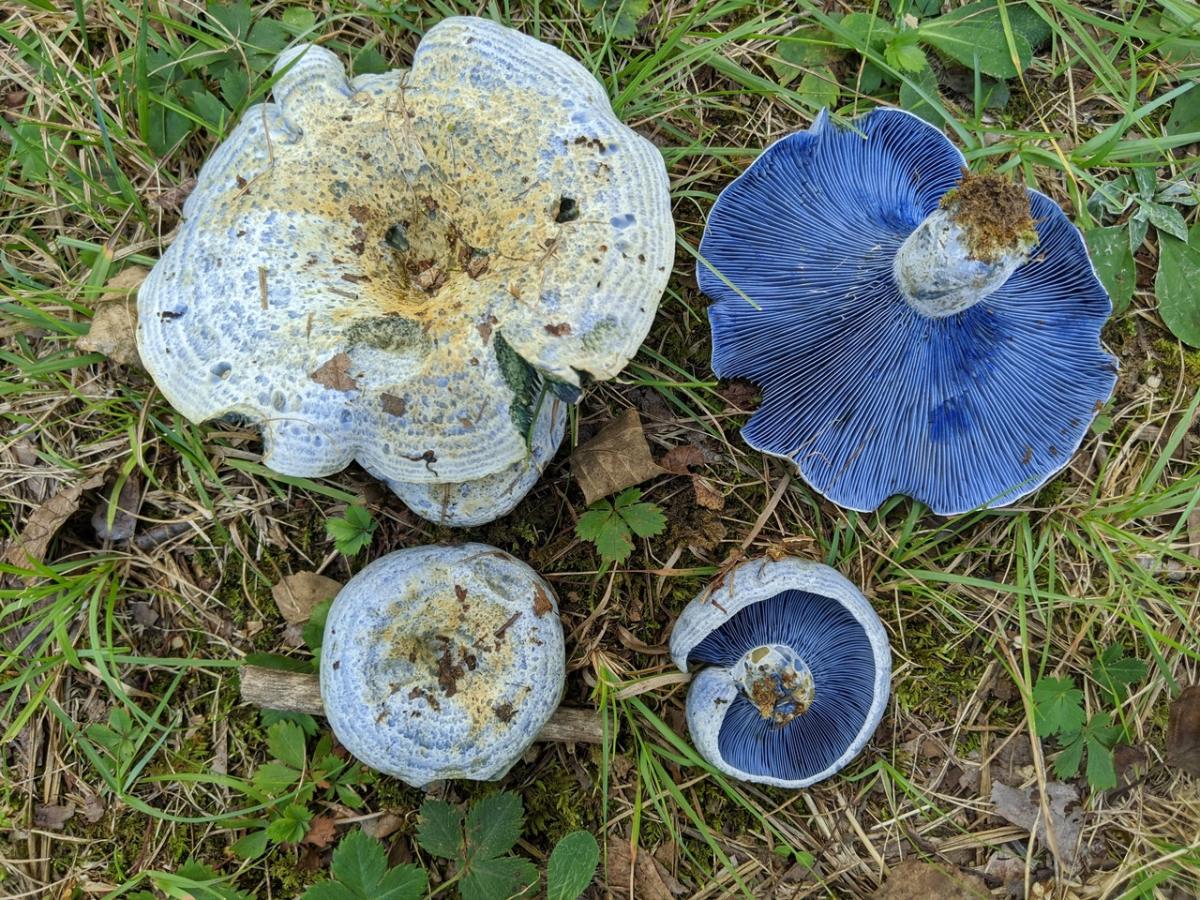
Salmon Milk Cap (Lactarius salmonicolor)
This milk cap has a vibrant orange to salmon-pink cap, typically measuring 2 to 6 inches in diameter. The cap is rounded when young and becomes funnel-shaped with age. It also often has a slightly sticky surface. Its gills and stem share a similar salmon-orange color. This mushroom exudes an orange latex.
The salmon milk cap is a choice edible mushroom, prized for its mild, slightly fruity flavor. Lactarius salmonicolor has a mild, slightly peppery taste. The texture is firm and meaty when cooked.
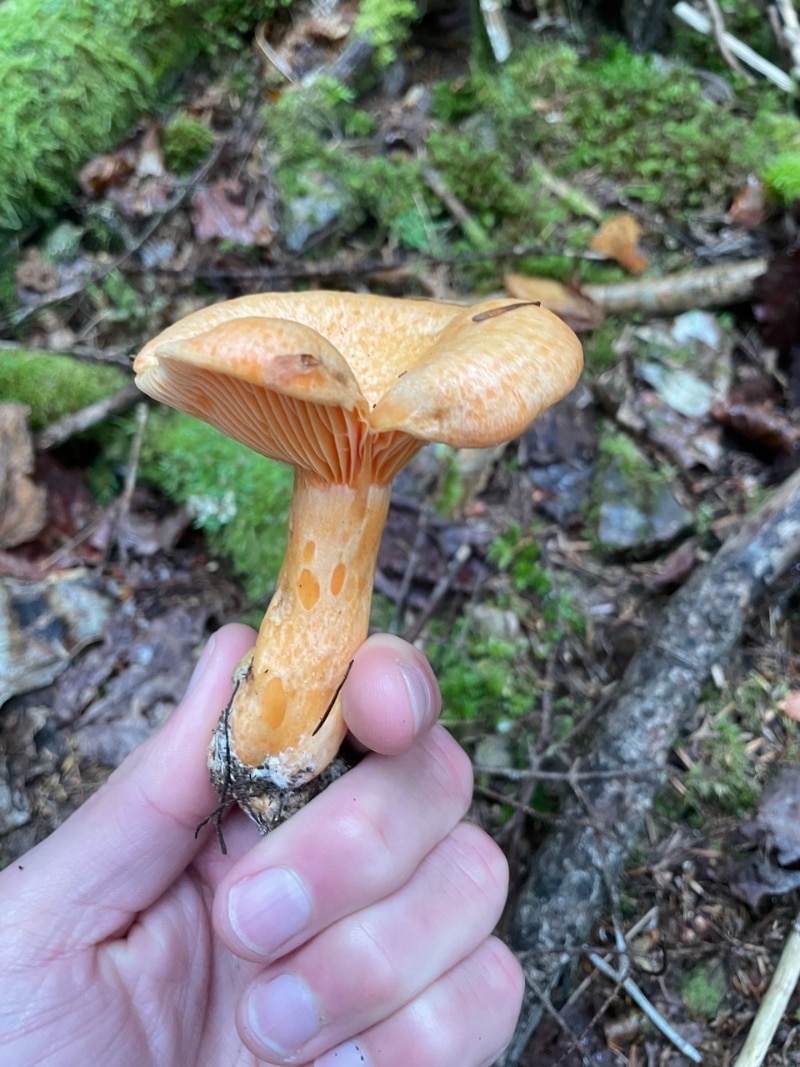
Candy Caps (Lactarius camphoratus, Lactarius rubidus, Lactarius rufulus, Lactarius helvus, and Lactarius fragilis)
These milkcaps are commonly known as the Candy Caps because of their wonderful and distinctive maple syrup scent. The intensity of the smell varies by species, with many becoming more concentrated when they’re dried, but you can usually get a good whiff of something sweet. This is a small to medium-sized mushroom species with a cap measuring 0.8 to 2.4 inches in diameter. The cap is rounded when young and becomes flattened or slightly depressed with age.
The cap color ranges from reddish-brown to cinnamon, and the center is usually darker. Its gills are closely spaced and pale pinkish-buff, while the stem is cylindrical and measures about 0.8 to 2 inches tall. When cut or bruised, candy caps exude a watery, white latex. And the milky latex does not change color.
This species is edible, but it isn’t commonly prepared fresh. The fresh specimens are small, and the taste is often mild. However, when it is dried and used as a flavoring agent in desserts, its intense, sweet aroma is incredible, literally, just like maple syrup. The smell and taste can persist for years in dried specimens.
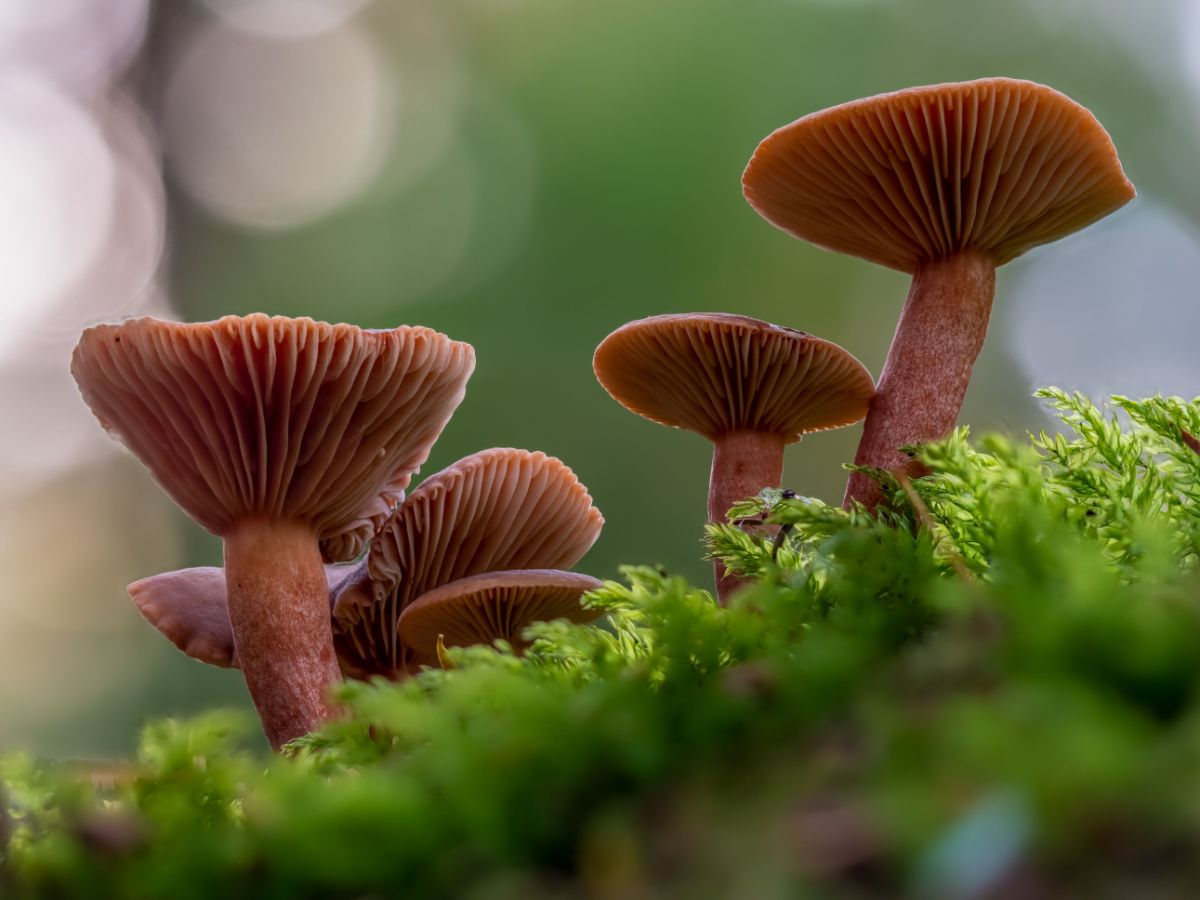
Hygrophorus Milky Cap (Lactifluus hygrophoroides, formerly known as Lactarius hygrophoroides)
This hygrophorus milk cap is commonly found in oak and pine forests in eastern North America. Its cap is orange-brown and measures 2 to 6 inches in diameter. The cap is rounded when young and becomes flat or slightly depressed with age. The surface is smooth and dry. It exudes a white milky latex that does not change color. The stem is usually 1 to 3 inches tall and a similar color to the cap.
The flesh of this mushroom is firm and white, with a mild, slightly peppery taste that becomes more pronounced when cooked. It can be prepared by sautéing, grilling, or incorporating it into stews and soups.
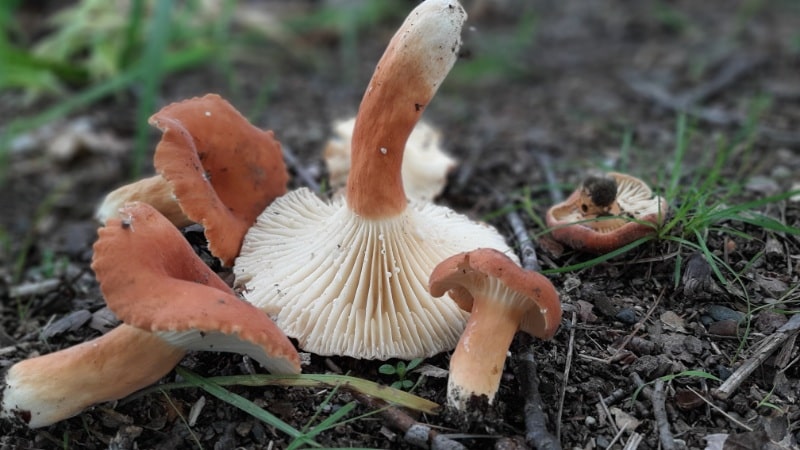
Corrugated Milk Cap (Lactifluus corrugis)
This mushroom is large for milky caps, typically ranging from 2 to 8 inches in cap diameter. The cap is rounded to funnel-shaped and has a noticeable central depression in the center. It also has a distinctly wrinkled or corrugated surface, which is how it got the species name “corrugis,” meaning wrinkled.
The cap color varies from pale pinkish-buff to reddish-brown and often develops darker spots or stains with age. The gills are closely spaced and run slightly down the stem (decurrent). They start out white but develop a pinkish-to-salmon tint as the mushroom matures. A key feature of this species is the copious white latex that exudes from cut or damaged tissues. The latex slowly stains pinkish to brownish upon exposure to air.
This mushroom is edible but not considered a choice by most foragers. Its taste is often described as acrid or peppery when raw, which may be off-putting to some. Cooking can help mitigate the acrid flavor.
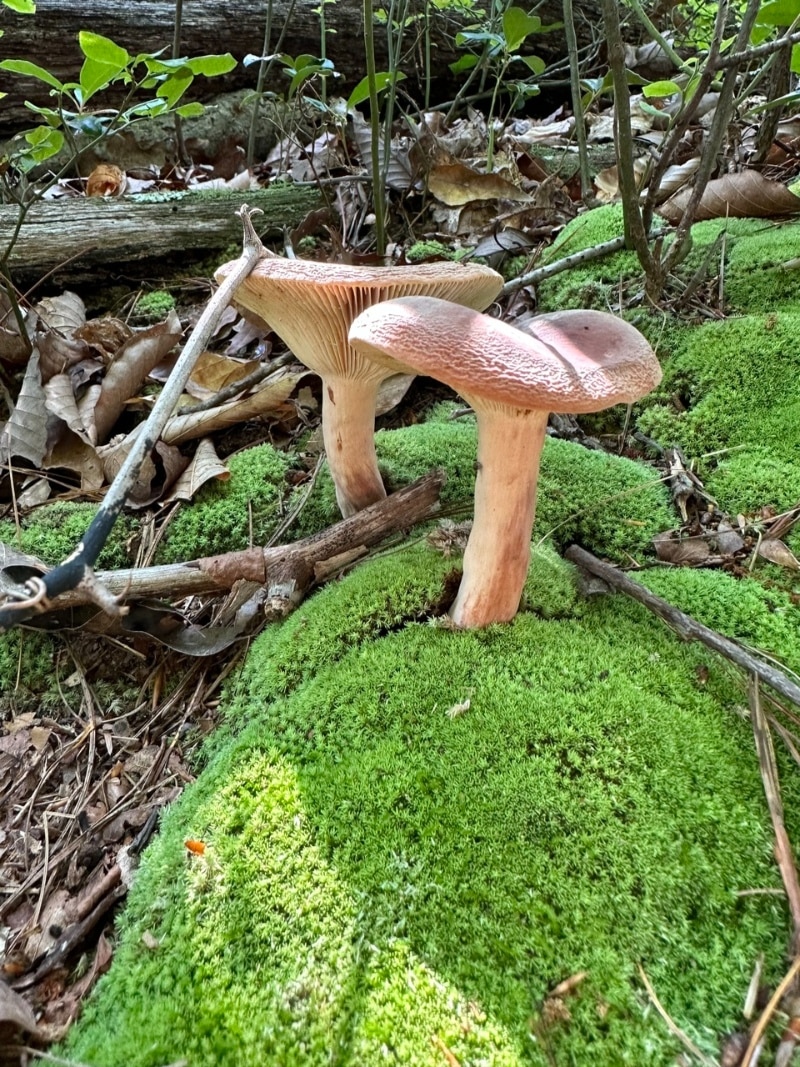
Weeping Milk Cap (Lactifluus volemus)
This milky cap species is found in hardwood forests. The weeping milk cap has a robust appearance, with a cap typically measuring 2 to 6 inches in diameter. The cap is rounded when young and flattens with age. It is orange-brown to reddish-brown in color.
It is notable and distinguishable by two factors. First, it smells like fish – sometimes it’s very strong, and other times it’s mild. But, the fish smell is distinctive; many say it is more of a dead-fish smell than a fresh fish smell. The smell gets stronger after the mushroom is picked and even more so when it is dried.
The weeping milkcap also emits copious amounts of white latex when the flesh is cut or damaged – that’s where its common name comes from. The milky latex slowly turns brownish upon exposure to air. The stem is sturdy, usually 2 to 4 inches tall, and matches the cap in color.
This is an edible and choice mushroom, prized for its mild, slightly sweet flavor. That terrible fishy smell actually, and thankfully, disappears with cooking. The texture is firm and meaty, and it can be sautéed, grilled, or used in stews and soups.
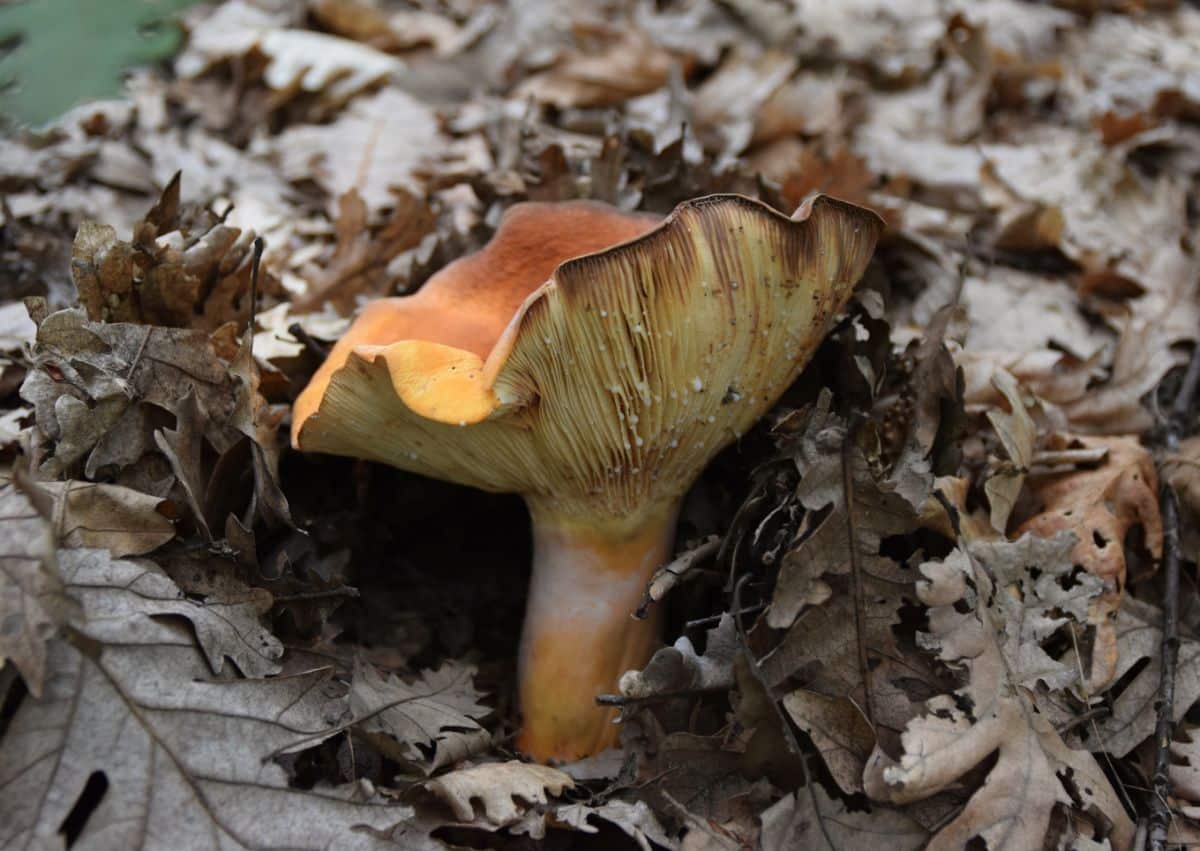
Peppery Milk Cap (Lactifluus piperatus)
The peppery milk cap has a large, white cap that can grow up to 6 inches (15 cm) in diameter and usually has a slightly depressed center. The stem is short and thick, typically 1-2 inches tall. When cut or bruised, this mushroom exudes a milky white latex.
This species is edible but extremely spicy. Some foragers parboil it to reduce the spiciness, while others use it as a spice in small quantities. When it is dried, you can use it in place of pepper.
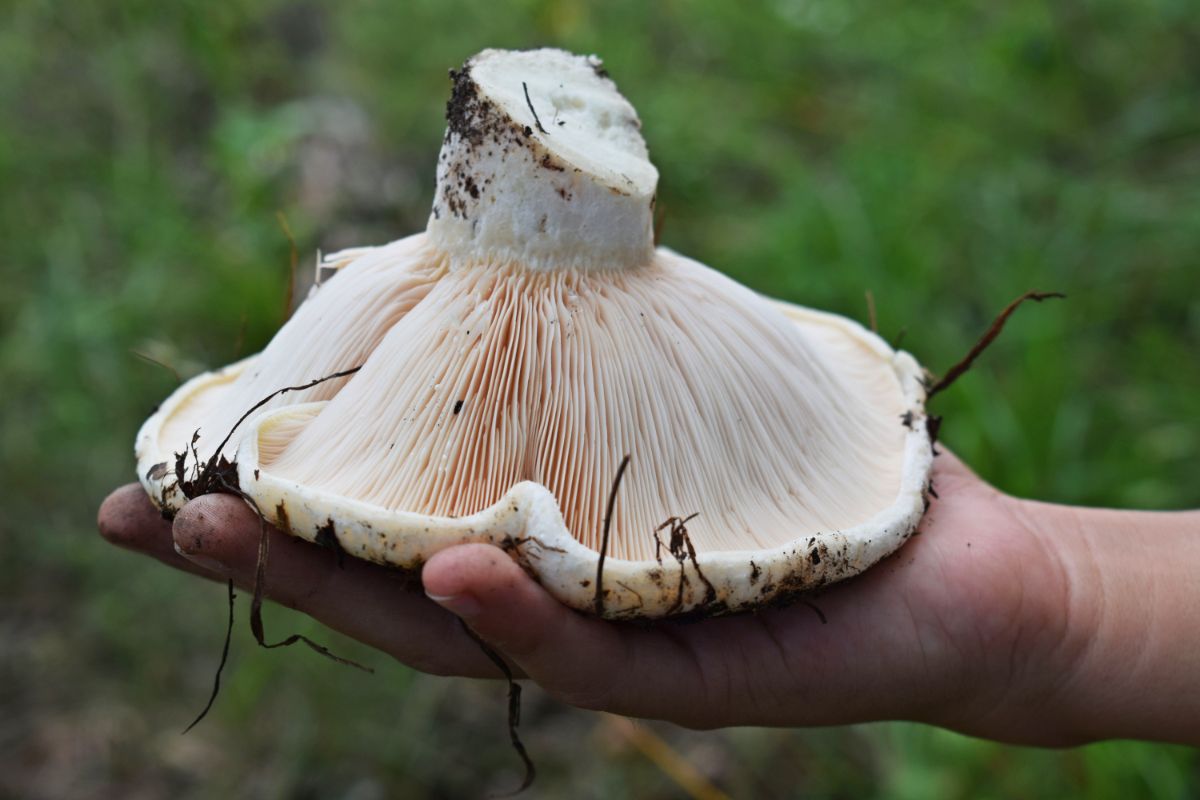
Coconut Milk Cap (Lactarius glyciosmus)
This is a small to medium-sized milk cap mushroom. Its cap measures 0.8-2.4 inches in diameter and has a distinctive pale grayish-lilac to pinkish-buff color. The cap is initially rounded but becomes flattened or slightly depressed with age and often develops a small central bump. The gills are crowded and pale cream to pinkish-buff. They bleed a white, mild-tasting latex when damaged; the milky latex does not change color.
The stem is typically 1.2-2.4 inches tall and a similar color to the cap. A key identifying feature of the coconut milk cap is its strong, sweet coconut-like smell. It also has a little trick up it’s sleeve: if you do a nibble taste test, it’ll be quite mild at first. Then, after 30-60 minutes it becomes burning hot! This species is edible, but it is generally not collected because of the acridity and its small size and lack of substance. In Eastern European cultures, though, it is commonly foraged.

Other Common North American Milky Cap Mushrooms
Kindred Milk Cap (Lactarius affinis)
This mushroom has a cap measuring 2 to 6 inches in diameter. It is rounded, then flattens or becomes slightly depressed as it matures. The cap color ranges from pale ochre to tawny brown and often develops darker spots or stains with age. It exudes a milky white latex and does not change color upon exposure to air. The stem is usually 1 to 3 inches tall, with a similar color to the cap or slightly paler. This is an edible species but not particularly choice. Many foragers and mycologists recommend against eating it due to its bitter taste and the potential for gastrointestinal upset in some individuals.
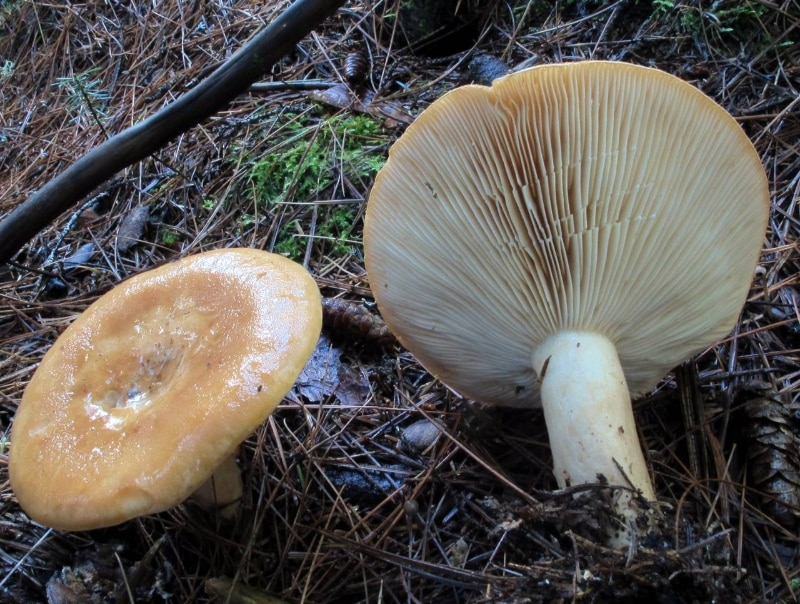
Red Hot Milk Cap (Lactarius rufus)
The measures 1.5 to 4 inches in diameter and stands 1.5 to 3 inches tall. The cap is rounded when young, then becomes flat or slightly depressed with age, It is reddish-brown to brick-red in color and there are concentric zones or rings on the cap surface. When cut or bruised, the red hot milky cap exudes a white, milk-like latex that turns slowly reddish upon exposure to air. This mushroom is inedible due to its extremely peppery taste, which remains even after cooking.
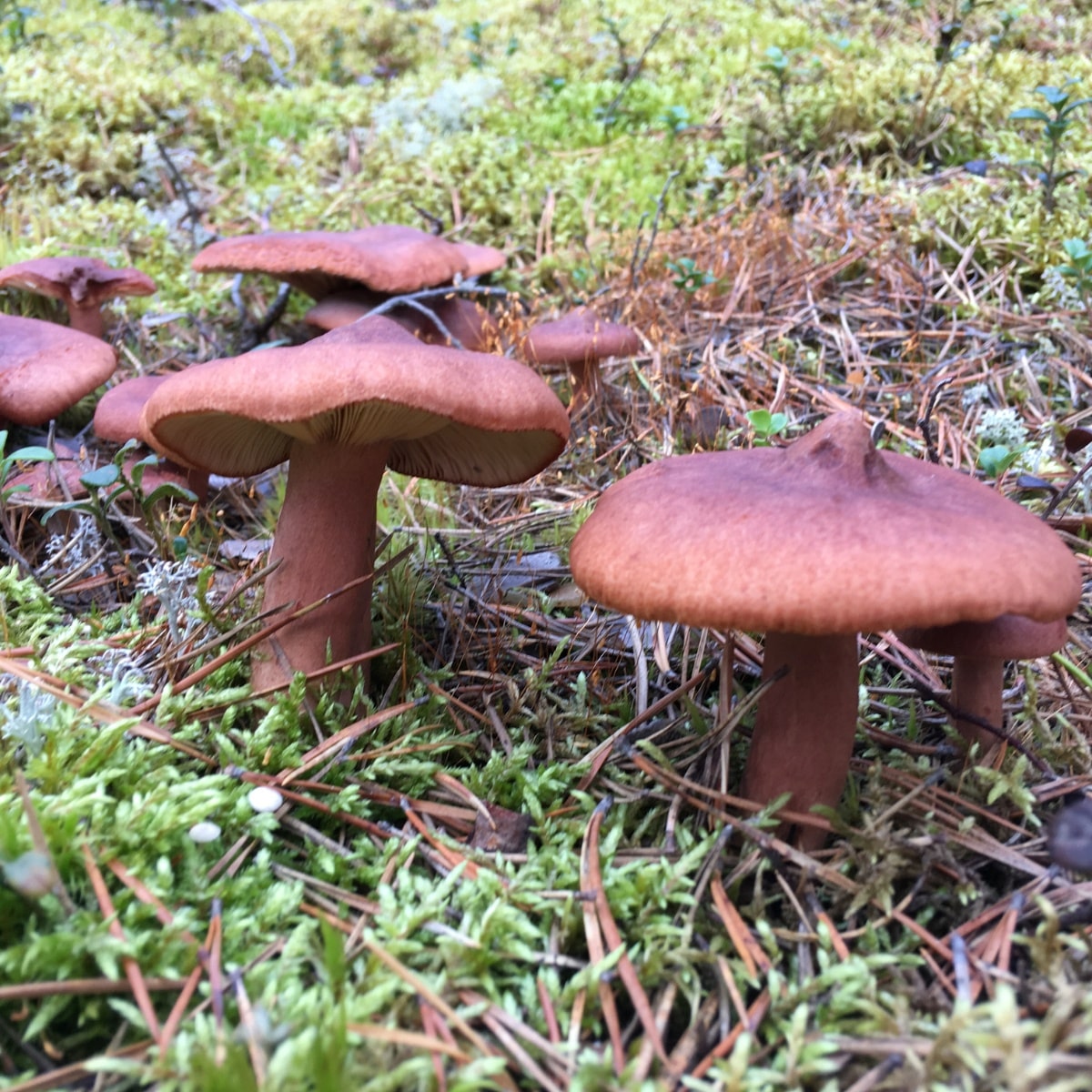
Golden Milkcap (Lactarius alnicola)
This milky cap is found in association with alder trees. It has a distinctive golden-yellow to orange cap that measures 2 to 4 inches in diameter, often with a slightly depressed center and edges rolled under when young. The stem is 1 to 3 inches tall and a similar color to the cap. It exudes a white milky latex when cut or bruised. The gills are closely spaced and run slightly down the stem. This mushroom is edible but not choice. Its taste is often described as mild to slightly acrid, and it’s not typically sought after by mushroom foragers.
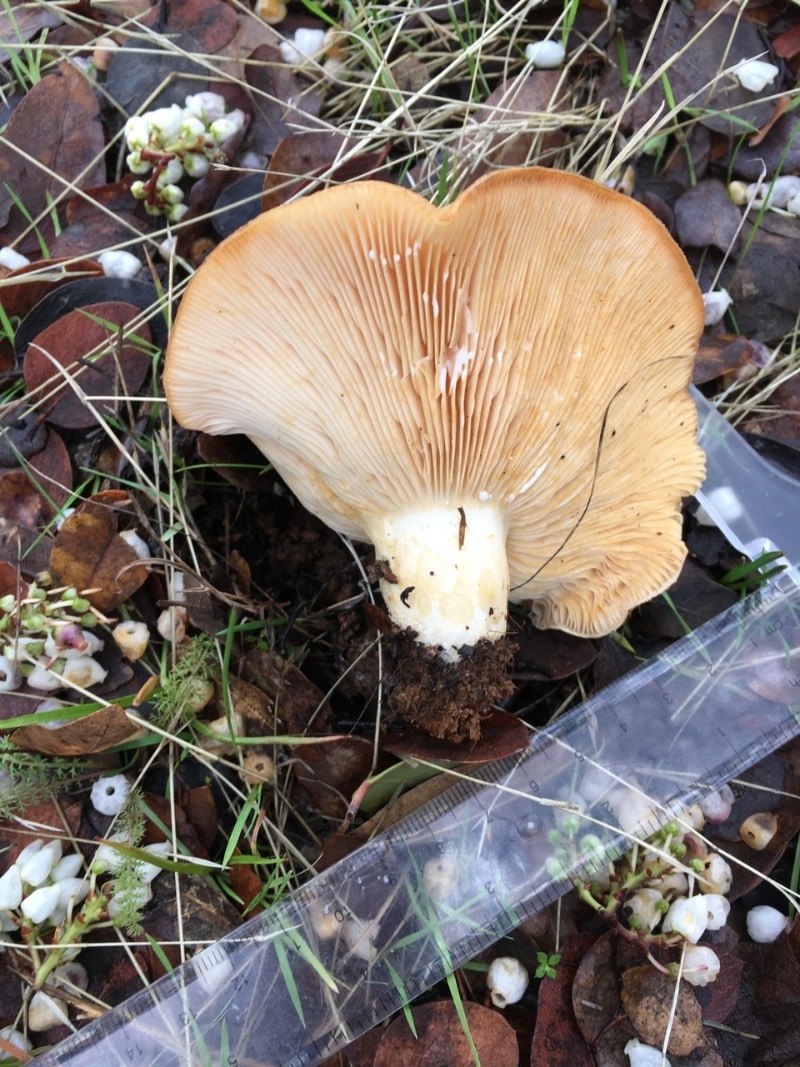
Yellow-Milk Milk Cap/Golden Milkcap (Lactarius chrysorrheus)
The golden milkcap cap measures 2 to 4 inches in diameter and has a funnel-like shape with a slightly depressed center. The cap color ranges from pale pinkish-buff to orangey-ochre and often has concentric zones of darker shades. The milky latex starts out white but quickly turns golden-yellow upon exposure to air. The stem is usually 1 to 2 inches long and a similar color to the cap. The gills are crowded and decurrent, running slightly down the stem, and are pale cream to pinkish-buff in color. It is inedible due to its extremely acrid, peppery taste that persists even after cooking.
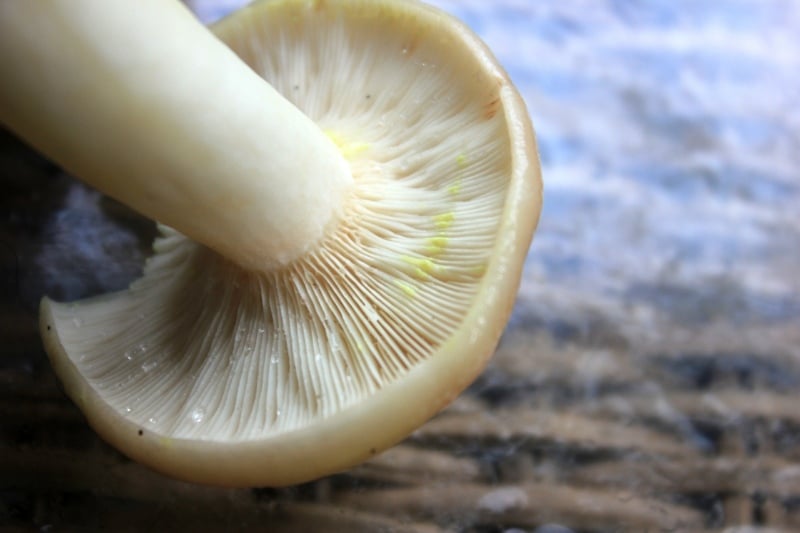
Fenugreek Milkcap (Lactarius helvus)
This is a medium-sized milky cap mushroom that smells distinctly like curry! It typically measures between 1.5 to 4 inches in cap diameter and has a rounded to flat cap. The cap color ranges from pale tan to reddish-brown and has depression in the center. The gills are crowded, cream to pale yellow, and bruise brown. When cut, the gills emit a very watery, white (sometime very clear) latex that doesn’t change color. The stem is 1.5 to 3 inches tall and is the same color as the cap. This species is not edible due to its extremely bitter taste.

Liver Milk Cap (Lactarius hepaticus)
The liver milkcap mushroom typically has a cap measuring 1 to 3 inches in diameter, with a distinctive reddish-brown to liver-colored appearance. The cap often develops a central depression as it matures. The stem is usually 1 to 2 inches, and when cut or bruised, it exudes a white, mild-tasting latex that doesn’t change color. This species is inedible because of its extremely bitter taste.

Sooty Milk Cap (Lactarius fuliginosus)
This species has a dark brown to nearly black cap, though sometimes it is more gray or tan. The cap measures 1.5 to 4 inches in diameter and has a slightly depressed center. The cap surface is smooth and velvety but sticky when moist. Sooty milkcap gills are pinkish or light-olive and stain pink when bruised. The stem is typically 1 to 2.5 inches tall and is the same color as the cap. When cut or bruised, the sooty milkcap exudes a white latex that slowly turns pinkish-gray. This species usually has very spare latex, but it is apparent it exists because the gills are stained where it leaked. This mushroom is too bitter and acrid to eat.
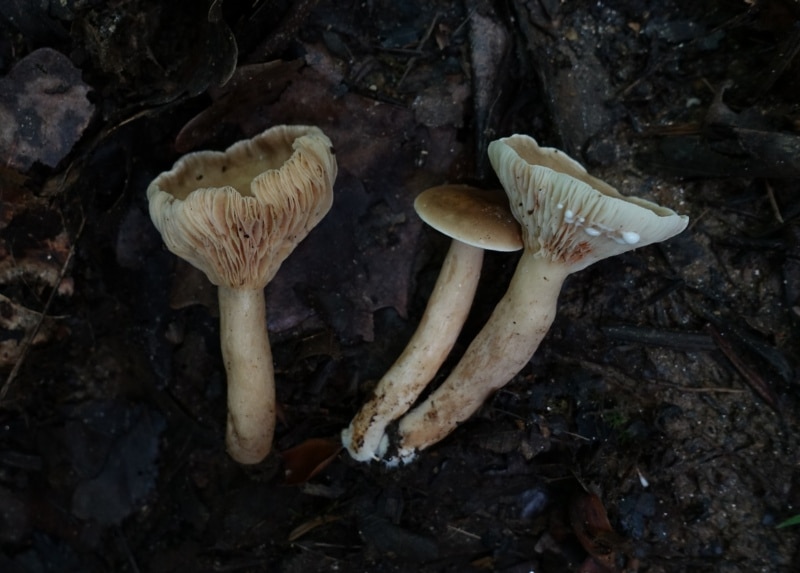
Cooking With Milk Cap Mushrooms
Milk caps can be prepared like any other mushroom. They hold up well to cooking and usually have a mild flavor. They often have a unique “granular” texture that adds complexity to dishes.
Cleaning is usually straightforward, often requiring only brushing off leaves or dirt. Sometimes, pine needles or other debris get lodged in the cap, but they usually come off readily with a quick wash.
A popular traditional preparation method is niscalos a la plancha: the mushrooms are pan-fried and sprinkled with garlic, parsley, and olive oil.
Milk cap mushrooms can also be pickled, stewed, or dried for later use. In some Eastern European and Russian communities, milk cap mushrooms are fermented.
In Spain, particularly in Catalonia, saffron milk cap mushrooms, known as Rovelló, are highly prized. Catalans often venture into forests to harvest these mushrooms sustainably. It has turned into an annual tradition and unofficial sport of the region. Rovelló mushrooms are sold in large quantities at local markets and are favored for their meaty consistency. They are incorporated into stews and soups, sautéed with vegetables, or cooked into sauces.
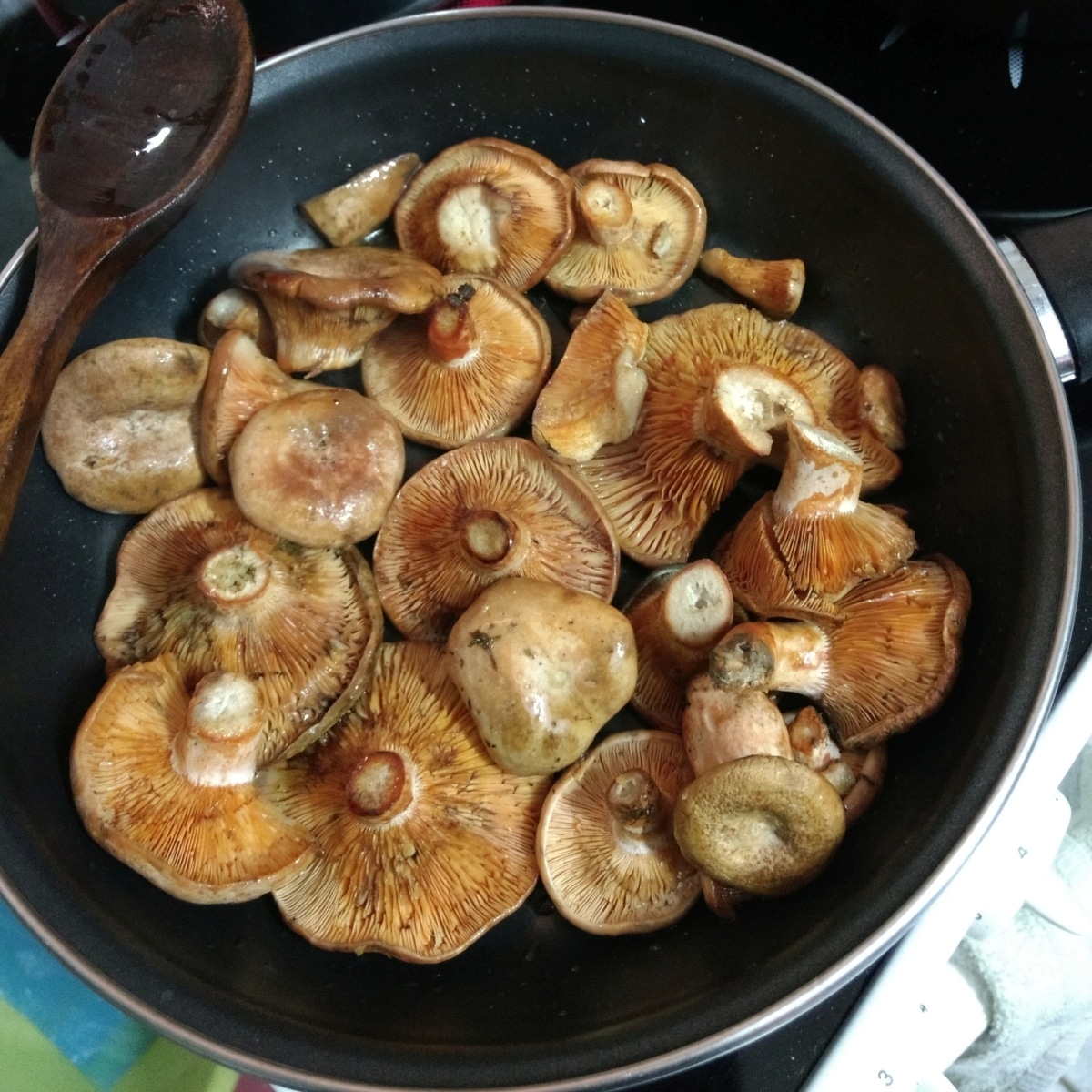
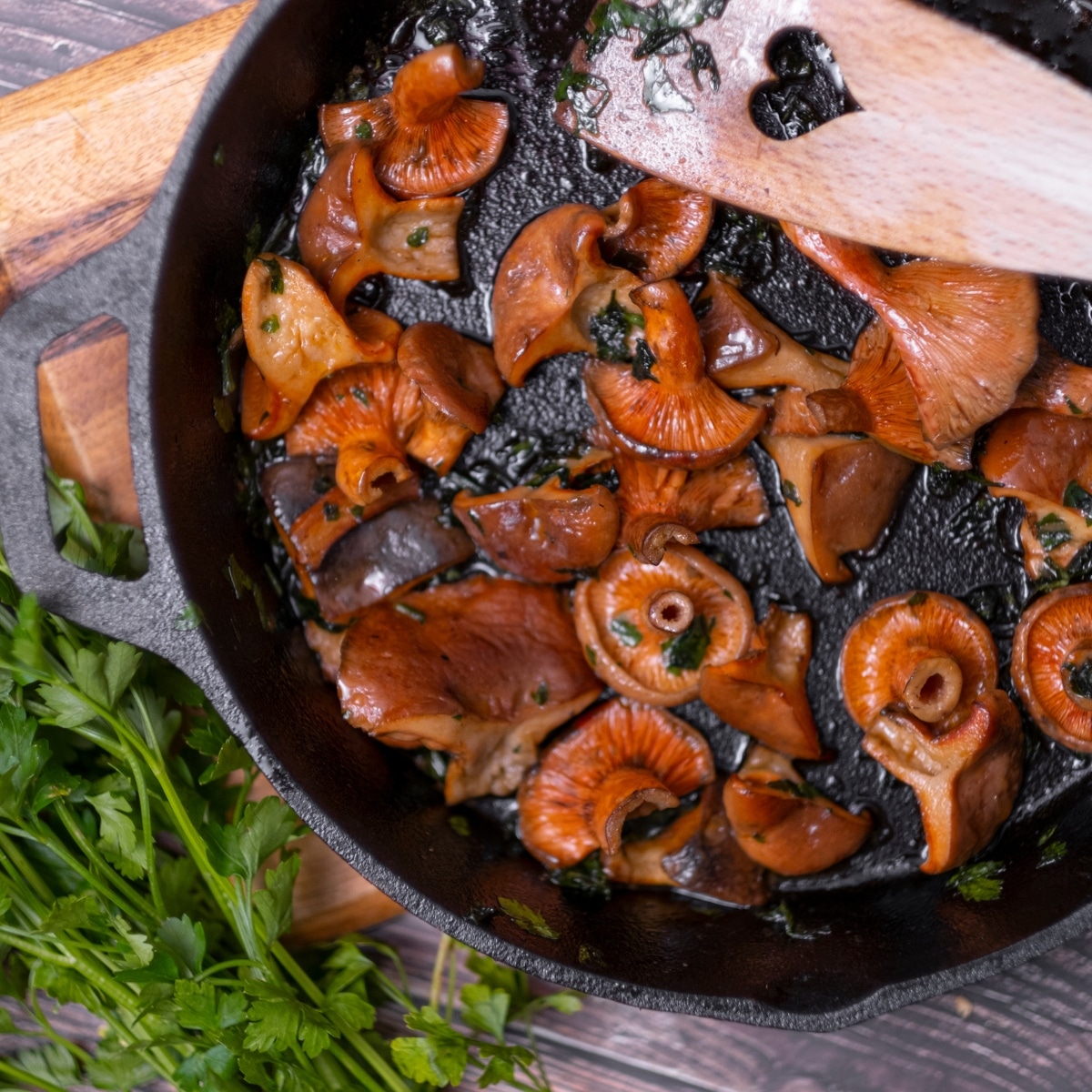
Milk Cap Mushrooms Medicinal Potential
Milk cap mushrooms have shown promising medicinal potential. They are rich in antioxidants, mainly polysaccharides and polyphenols, which have powerful anti-inflammatory properties. These mushrooms may boost the immune system and have been studied for their potential anti-cancer properties.
- The Health Promoting Effects of the Fruiting Bodies Extract of the Peppery Milk Cap Mushroom Lactarius piperatus
- Chemical compositions and health promoting effects of wild edible mushroom milk-cap (Lactarius deliciosus)
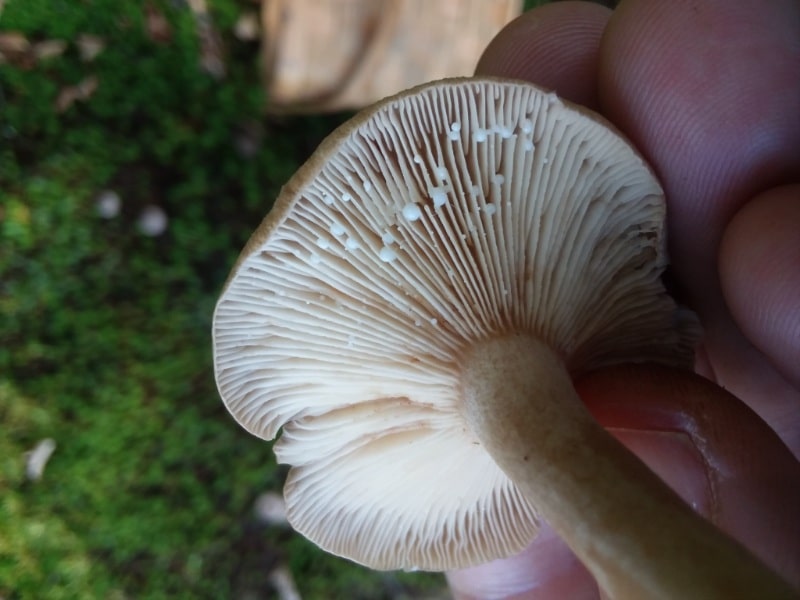
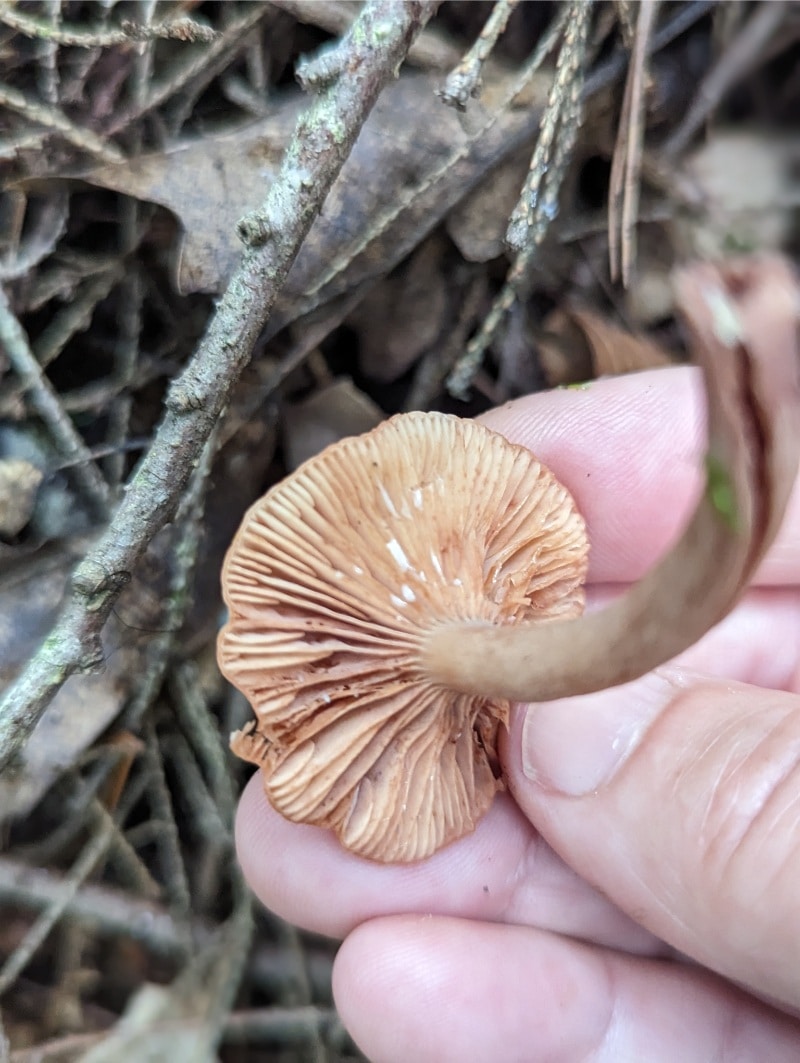
Common Questions About Milky Cap Mushrooms
How can you identify milk cap mushrooms?
Milk cap mushrooms can be identified by their thick and sturdy stems, rounded caps, and gills. The key characteristic that sets them apart from other species is the secretion of a milky or latex-like substance when the gills are cut, which can vary in color from white to yellow or orange.
Are any milk cap mushrooms toxic?
There are hundreds of milk cap species, and none of them are deadly. However, some will cause terrible gastrointestinal pains if eaten. Others are simply too bitter or spicy to eat but aren’t toxic.
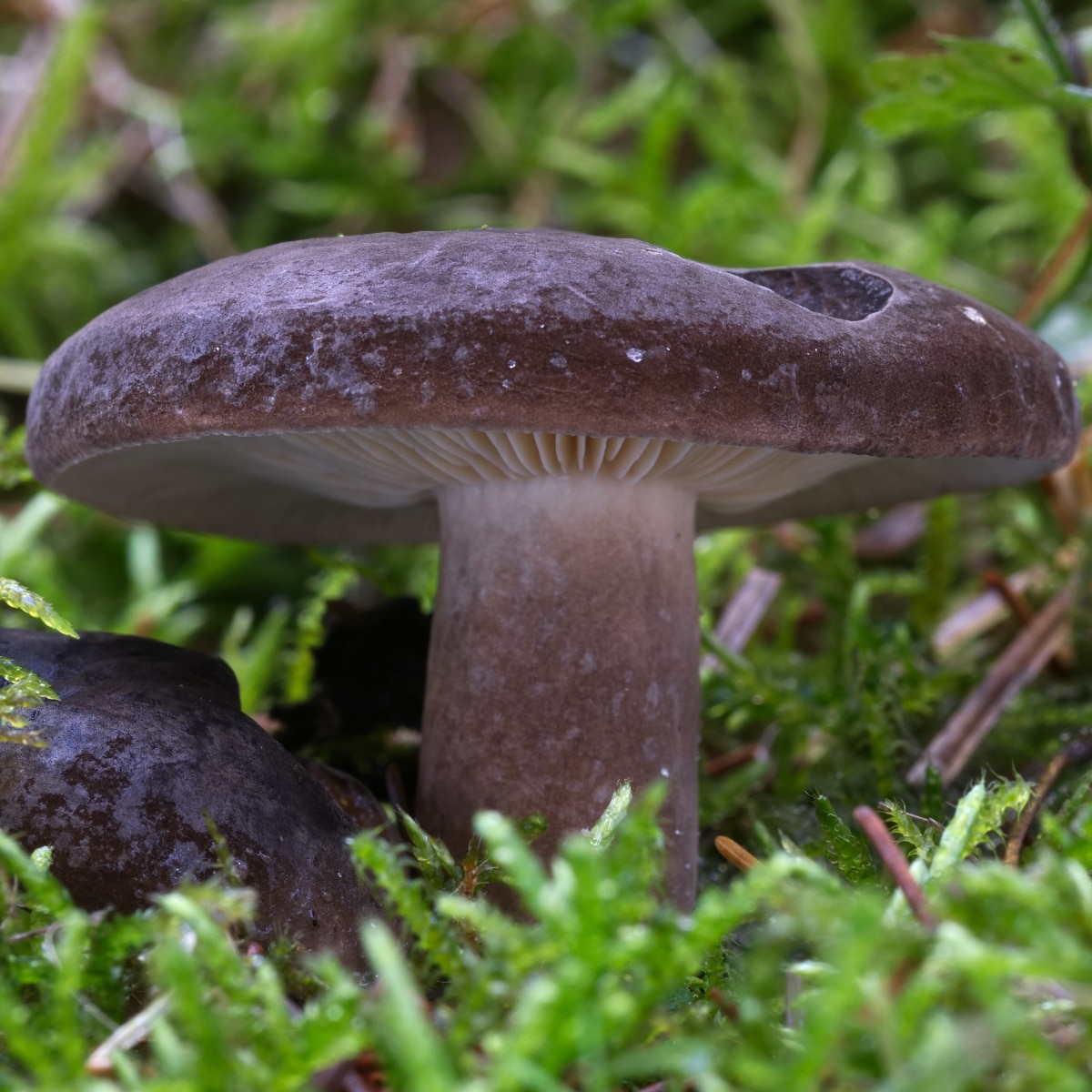

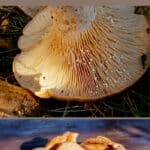
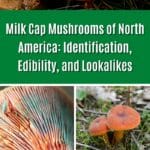
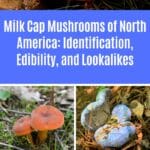
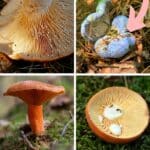




Leave a Reply